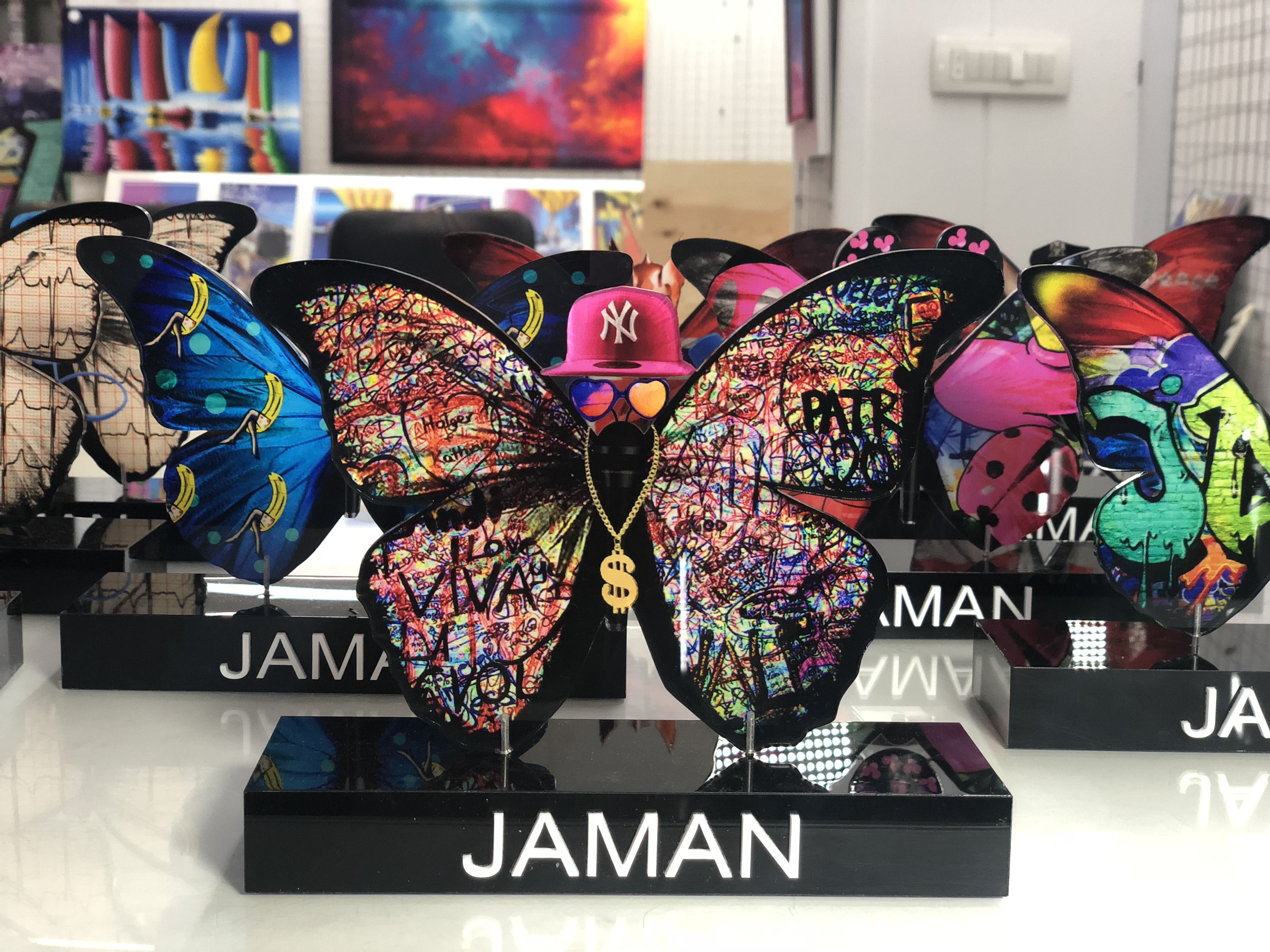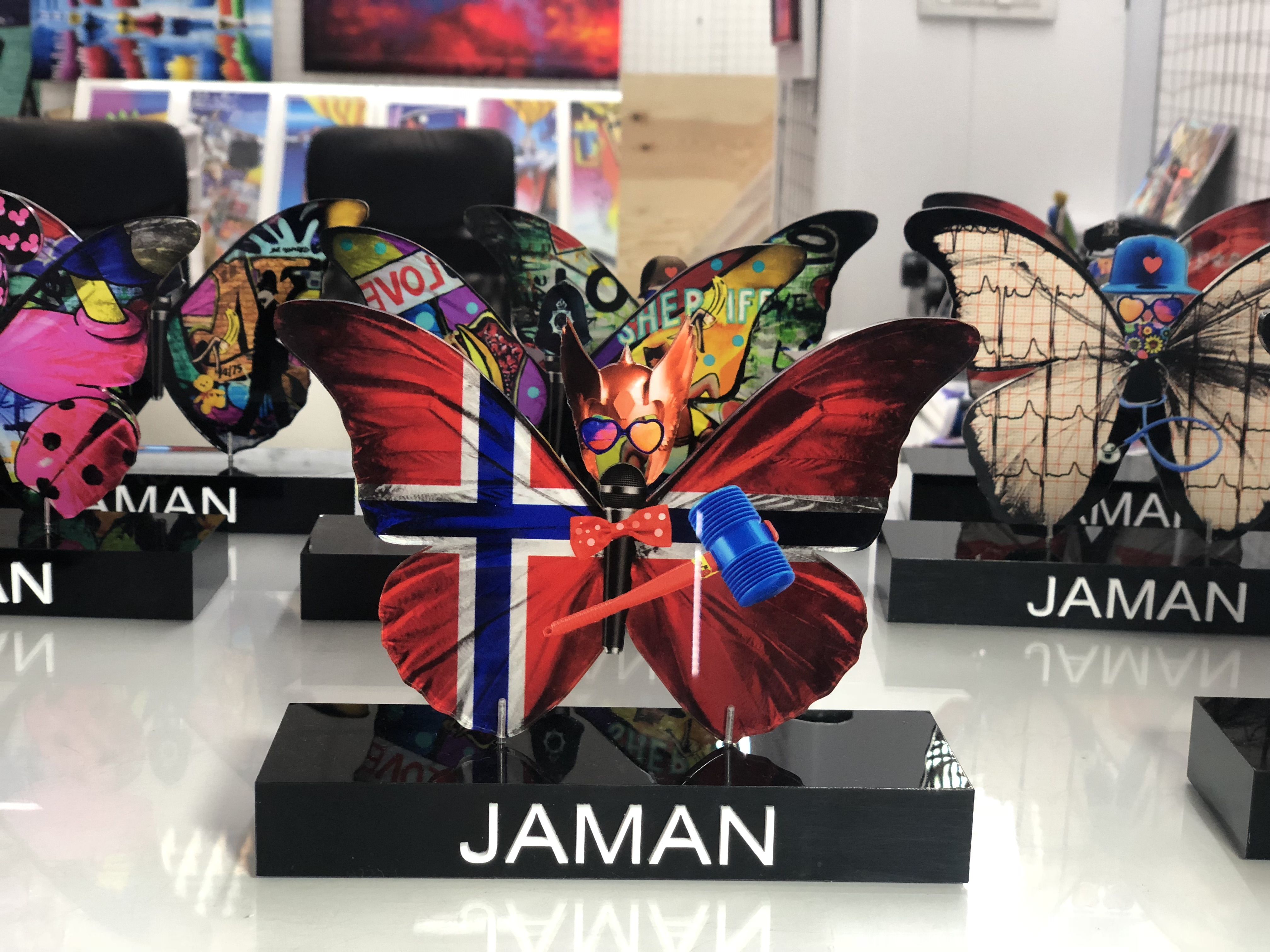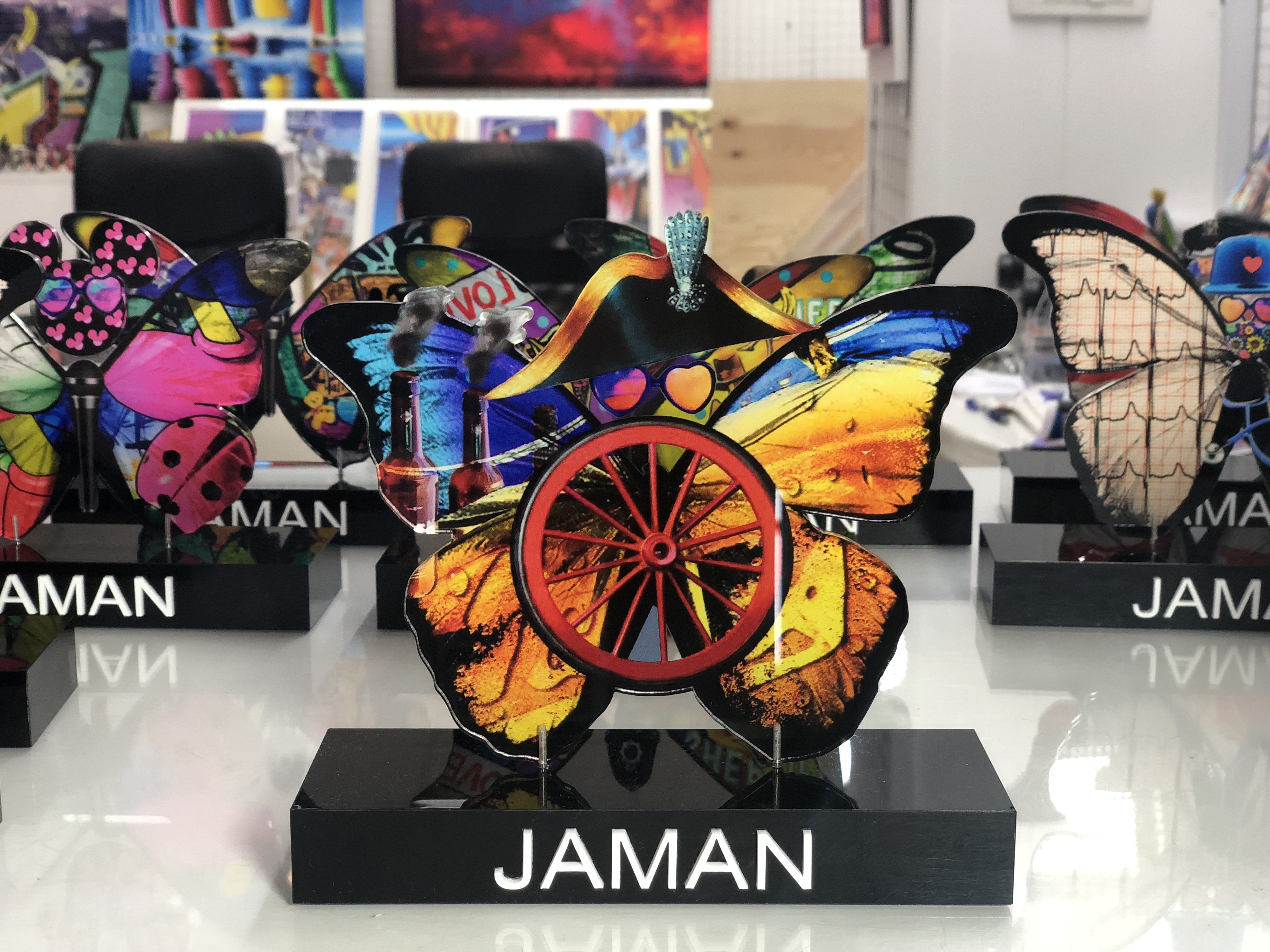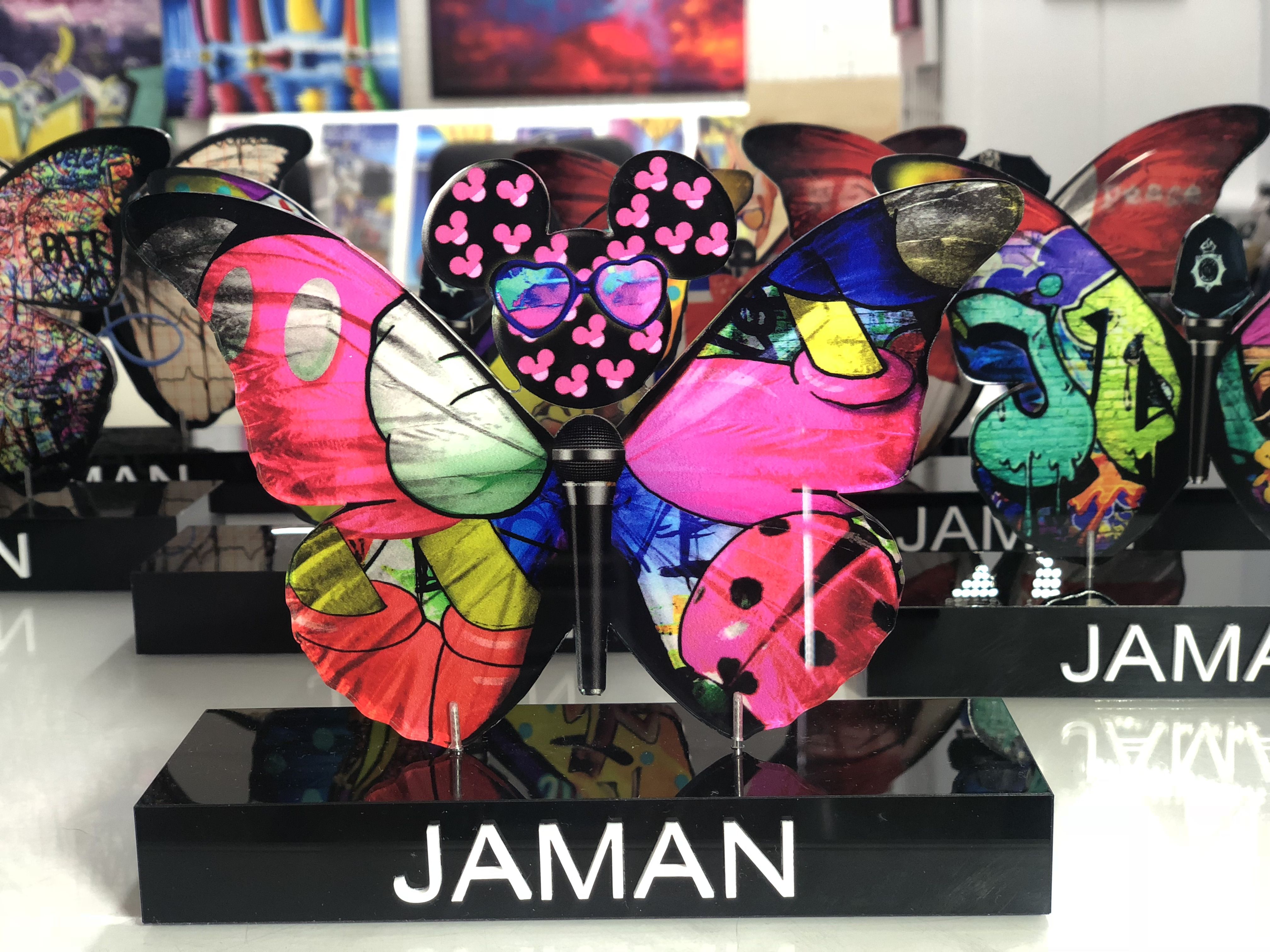International Poetry Day Croatia: Non-Croatian Poets about Croatia
March 21, 2021 - In honour of International Poetry Day Croatia, TCN's Ivor Kruljac met with non-Croatia poets to share their views on Croatia through their art.
Since 1999 and the 30th General conference of UNESCO, March 21 is recognized as International Poetry Day. As said by the United Nations official website, the date was dedicated to poetry to celebrate „one of humanity’s most treasured forms of cultural and linguistic expression and identity“, which history remembers practiced in every culture on every continent.
„Poetry reaffirms our common humanity by revealing to us that individuals, everywhere in the world, share the same questions and feelings“, states the UN.
Supporting linguistic diversity and an opportunity of endangered languages to be heard within their communities along with encouragement to bring back the oral tradition of recitals, the promotion of poetry teachings and poetry in the media, as well as connecting this ancient art form with other art forms such as music, painting, and theatre, are all goals of the International Poetry Day. And here at TCN, we want to do our part and connect poetry with what we always struggle to report on: Showing all aspects of Croatia.
To the fans of contemporary poetry, it's no secret that poets today are very much alive, productive, and regularly present their work. If not in books then at poetry events, open-mics, and on social networks – either from their private accounts, blogs, or in groups dedicated to this wordy-art.
We asked non-Croatian poets through social networks and private group chats dedicated to poetry who either visited Croatia or know about Croatia to send us poems about Croatia with a promise that the top 5 will be published and authors presented. Now, to be fair, while the author of this article is a poet, that is far from being a legitimate poetry critic and the rest of the TCN's editorial team (at least to public knowledge) aren't even poets. The idea was to pick the poems based on how it resonates with us as individuals who gave the art a chance. The academic acknowledgment is nice, but resonating with the audience, the everyday people, should be the goal of any art publically displayed, right?
To be honest, there wasn't really any competition as, by the end of the deadline, we received only four poems. Nonetheless, the beauty of these poems and great resonation with TCN was there and we are happy to publish these poems and ranked them, from fourth place to the very best. You can decide for yourselves which poem you like best (and the messages you see in their work), but here the four poems that „knocked on the doors of our mailbox“ (metaphorically, quite poetically, speaking).
#4: „Croatia“ by Jesus McFridge
Poets such as Charles Bukowski and Walt Whitman are very well known by their name, but just as in many other arts, poets are no exception in sometimes preferring to use pseudonyms to present their work while keeping their identity unknown and privacy secured. Such is the author that goes by the name of Jesus Mcfridge. Quite active in a Facebook group Poetry Criticism For Cool Cats, he revealed in his application that he is from California and described himself as a „24-year-old American that watches too much television“. He added that his knowledge of Croatia is limited to the country at the 2018 FIFA World Cup, but he has fallen in love with the Croatia national football team's checkered uniforms. Despite never visiting Croatia, after „Croatia's tragic loss in the 2018 World Cup final“, he found himself also crying just as many Croatians did.
„In this poem, I have attempted to capture the feeling of this tragic loss that we have shared together, despite the vast seas that separate us“ concluded Mcfridge in his application.
His bittersweet poem simply titled „Croatia“ indeed brings some painful memories but presented in a short and funny way allows us to look at the past in a brighter way, bring back smiles, and give us the strength to cheer for our Croatia national team as they prepare for the next trophy hunt.
Croatia
They
Almost won
The world cup
But
Mandzukic scored
An own goal.
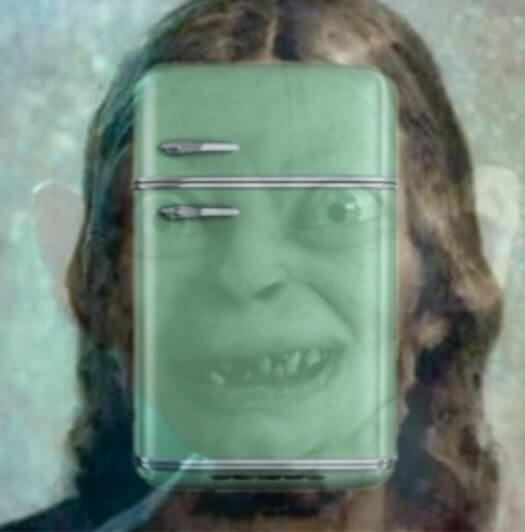
Jesus Mcfridge © Jesus Mcfridge
#3 „Daniela's song“ by Christian Sinicco (English translation by Daniela Sartogo)
Christian Sinicco was born in Trieste, Italy, and his poetry is published in various anthologies and magazines and an editor of the magazine Argo with which he has dealt with the widest overview of poetry in the Italian dialect from 2000 to the present day. He published three books of poetry: „Passando per New York“ (Lietocolle, 2005), „Ballate di Lagosta“ (CFR, 2014) and „Città esplosa“ (Galerie Bordas, 2017). He won the first Italian Slam Poetry Championship and served as the president of the slam poetry association LIPS - Lega Italiana Poetry Slam (2013-2014) and is the current vice president of Poiéin. He is also active in a global initiative of slam poets organizing the world slam championship which early results can be followed on Twitch.
He participated in numerous book festivals including four festivals in Croatia: Zagreb Contemporary Poetry Festival, Forum Tomizza (in Umag), Pula Book Fair, and Rijeka Book Fair.
His second book of poetry „Ballate di Lagosta“, translates as Lastovo Ballads and it's actually a preview while Sinicco plans to soon publish the full book dedicated to this beautiful Croatian island on the southern coast.
„I was on Lastovo several times. I know a poet from there, Marijana Šutić and I spent a vacation there with other poets such as Ivan Šamija and Silvestar Vrljić“, said Sinicco in his application where he offered a poem from „Lastovo ballads“ which already seen its presentation on a prestigious literary site Versopolis.
„Daniela's Song“ may not bring out the most visual and most explicit Croatian motives, but the discrete and specific localization of Croatia is there all wrapped in a love poem to touch the heart and help us remember the summer sweethearts and romance in Croatia.
Daniela's song
I.
She talks about how beautiful it is without knowing where to go
perhaps into the water of the sun like her cheek
simply necessary as the wet dream
in a wider galaxy if it can be understood,
she seduces you through valleys and dusty vineyards
with eyes towards the bay with the waterfall:
Za Barje the sign said, and so also barked the dog tied
under the cypress – his teethed mouth was the buried reason
the fishermen had left him there – near a house
covered with ivy and blackberries, in which had grown
an apple tree with sour fruits and roses
that only you will taste:
avoiding the asphalt and dirt road holes you followed Daniela
targeting yourself and the asphyxia of your life
that follows the path to erect the intelligence of the species
that on the concept of work has built its republic of theft,
then you saw her dancing on the beach between the warm rocks
and the boat pulled out of the lobster pot, the fishermen are back:
good and evil are triangles of waves that spread
on the sea towards the two islands where we swam
– the fish are not aware of it,
and so the man under the pine and his child
with the mask, another fisherman with the fishing line,
only you maybe on the petals you bite as the words
II.
after quite a while we are outdoors and eat figs
at dusk time on this meadow
sliced on the wooden bowl,
we take the bread and tear it many times
because paradise is close to the fire
and the village to our left rises white in pink
made with scales like the barracuda
Korčula has no intention to leave our sight
I shouted as my usual self
you lit the candle and made me notice
we are not alone, but you can stay calm
slowly also the hut
and its fire have become attractive
calming the natural tension
of a darkening sky, not preventing us
from tasting the happiness
of a grilled fish, of tomato and capers
you are attractive when you smile
with a glass of water on the lips
too quietly they get up,
wanting to be born in the response they seek outside
the people at the tables next to us, and from the cottage
where they grill they come to clear up
a woman and the cook, as in a ceremonial
we ask for the check with the hands
they will be intertwined when we emerge from the field
toward the parking lot where we’ll get in the car
and head out to the highest point
of a series of bends, before descending to the valley
the vault of stars surprises us
we stop everything, propped on pillows of a land
that is still hot, we’re sure
that the star will fall, and it comes true
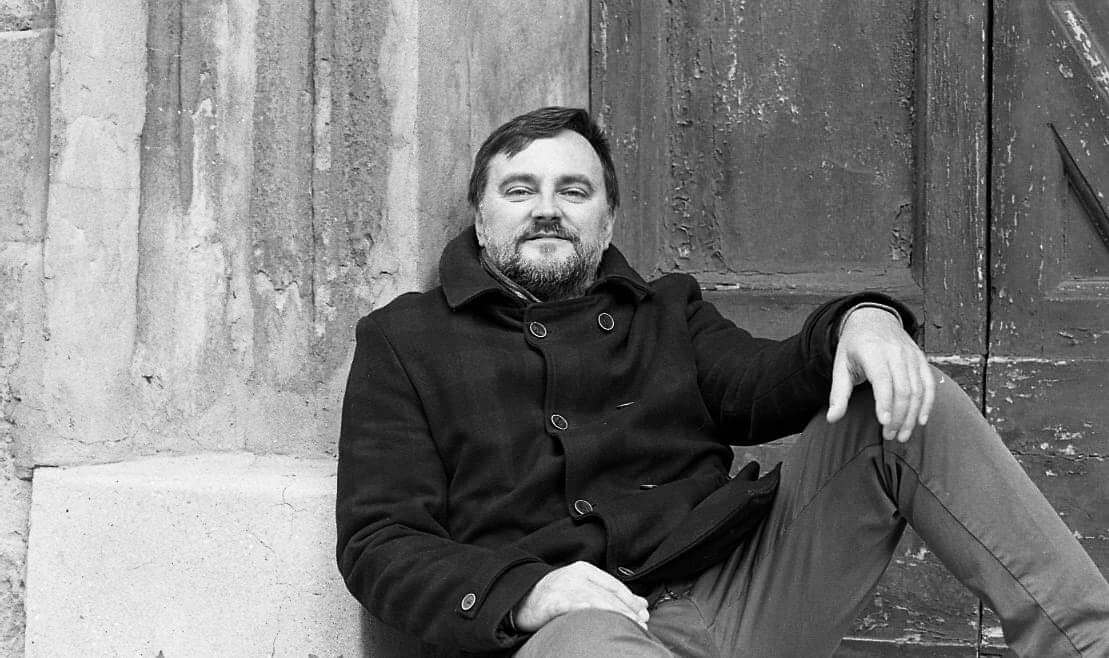
Christian Sinicco © Daniele Ferroni
#2 „The Lakes of Plitvice“ by Vanni Schiavoni (English translation by Graziella Sidoli)
Born in Manduria, Italy, but living in Bologna, Vanni Schiavoni published five poem collections: "Nocte" (1996), "The Suspended Balcony" (1998), "Of Humid and Days" (2004), "Salentitude" (2006), and "Walnut Shell" (2012). He also published two novels "Like Elephants in Indonesia" (2001) and "Mavi" (2019) and edited the poetic anthology "Red - between eroticism and holiness" (2010). Most recently, he also published poetical plaquette „Croatian Notebook“ which features twelve poems dedicated to six Croatian sites: Plitvice Lakes, Kornati, Šibenik, Trogir, Split, and Dubrovnik. Schiavoni wrote the "Croatian Notebook" after a week-long journey in the summer of 2017. His birthplace Manduria is located in the region of Puglia which is 30 miles away from the Pelagosa (Palagruža), the most distant Croatian island, and his surname originates from the name of the Slavonia region in Eastern Croatia.
„For me, it was not just a holiday trip but a journey in and out of everything that I am, a travel diary through which to bring out the game of mirrors between me and that place, between what I am and where I come from and what I have encountered“, said Schiavoni. This journey impacted him with images of the signs of Italy engraved in stone, mournings of the war, communist history („most heretical Communist party in the east in front of the largest Communist Party in the west“, as Schiavoni puts it) and as he added, „the same Adriatic Sea which gives both of us fishes and earthquakes“.
His poem „The Lakes of Plitvice“ is a lovely description of the mixture, the game, and visual eye-candy of the waters in Croatia's oldest National Park, and it linked with a search for bravery and the encouraging point that good and beauty can defeat evil and change it to something better.
THE LAKES OF PLITVICE
The first day they always plunge down into the same spot
the river rapids that come to the encountering
of the white river with the black river
and the more we think ourselves ready with our shrewd eyes
the fewer the adjectives made available to us before that wonder:
the green rush pushes our pupils towards a wild frenzy
it pushes them inside the tearful torrents by our feet
in the shrouded darkness of the sequential caves
and in the vertical caverns sculpted
as if by a hand capable of it all.
Yet Judas must have passed by this place
and though perhaps not the one with burning lips
a simple Judas must have become lost
in this mysterious grid of remorse.
These lakes fall into lakes as lashings on yielding branches
they flow into other waters and so they rain
endlessly
and perfectly untouched.
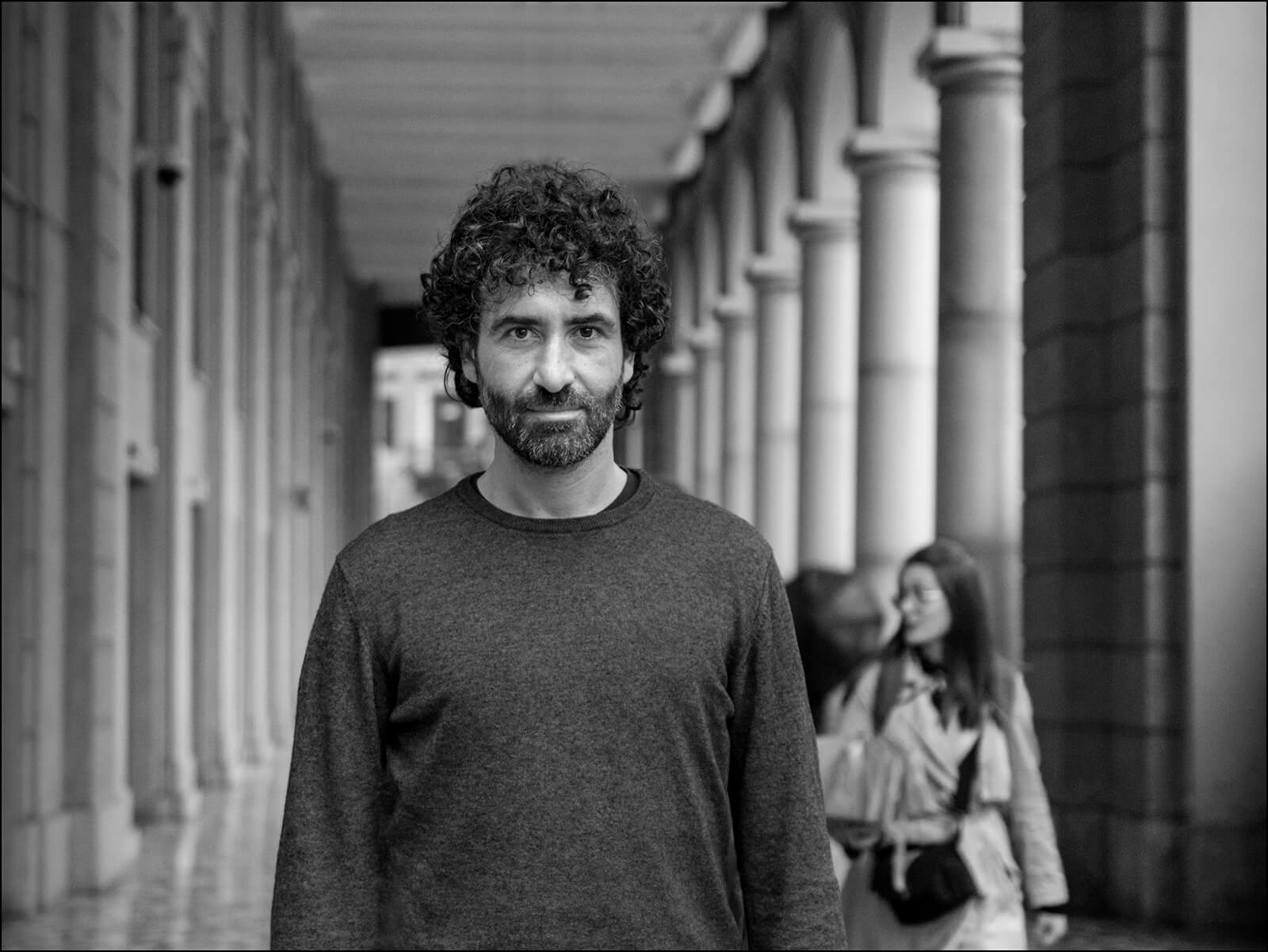
Vanni Schiavoni © Dino Igmani
#1 „Dubrovnik Rock“ by William Vastarella
After Schiavoni and Sinicco, our first-ranked poet is the conclusive evidence there is something so incredible about Croatia it really inspires poetically-inclined neighbors across the Adriatic. Born in Napoli in 1974, William Vastarella is a teacher of Italian Literature, geography, and History. He's has a Ph.D. in semiotics from the University of Bari and writes for several literary and cultural magazines in Italy. He also edited several poetry anthologies as well as semiotic essays. Vastarella visited Croatia several years ago and had a cultural and relaxing holiday on the seaside. „I found her so full of the Mediterranean spirit that I wrote a poem in Italian. I tried to translate it in other words, trying to leave intact the sounds of that memory“, said Vastarella about his poem on Dubrovnik.
The poem „Dubrovnik Rock“ is fantastic in the way, Vastarella visually invokes the images from the history of Dubrovnik (Ragusa) Republic and the relationship it had with Italians at that age with the waves of the Adriatic Sea as the link between Italy and Dubrovnik but also between past and present.
Dubrovnik Rock
Other singers claim to feel
singular vibes in the waves
Nearby this shore,
and so do I.
Ragusa, Dubrovnik
A name is not enough
To trap a soul.
I ask myself
Who’s the other side
Of the other side
As the seawater shuffles.
I touch with my finger
and now I know it’s real
the steel and the wood of the boat
powerful works of man
that wipe out weapons
and I ask no more.
I realize
we have been both
pirates and emperors
centurions and barbarians
through the centuries
each one to the other
a flurry flow
of slavers and Slavs,
slayers and saviors.
Sometimes when the north wind blows,
melting the white in waves,
painting clouds of amazing blues
mirroring the water in the sky,
space seems to become so narrow,
so easy the neighborhood,
then all
the voices of the ancient age
of an ancient game
of thousands lost
in that spot of time,
that spot of sea,
mutate in a mute roar singing
in which merge the rage of riot
and the call for help of a lot
castled in the rock
waiting for a drop of rain to drink
or friend sails on the horizon.
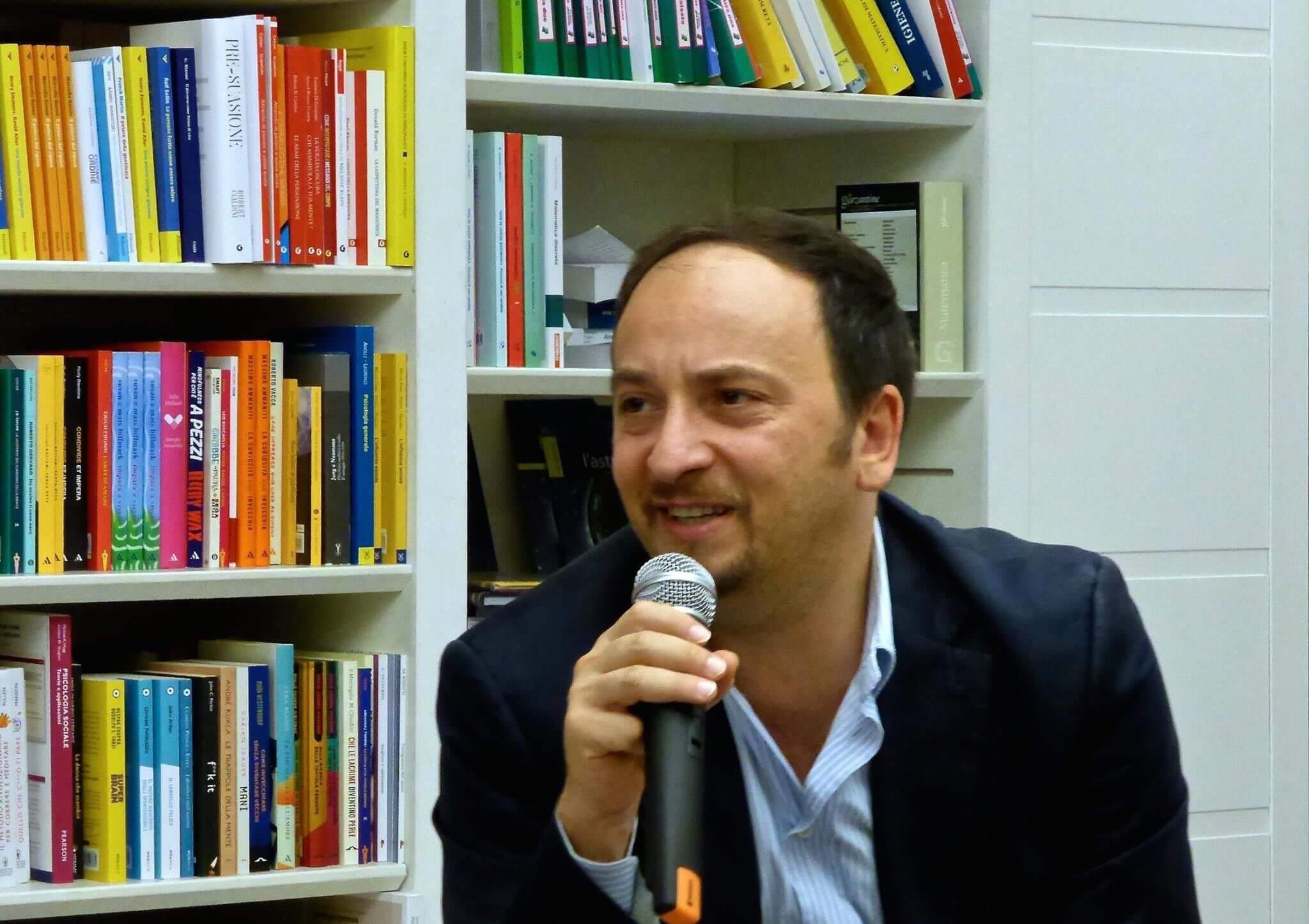
William Vastarella © Vito Signorile
For more about lifestyle in Croatia, follow TCN's dedicated page.
Opera Singers to Help in Post-COVID Rehabilitation
ZAGREB, 5 March, 2021 - Several professional opera singers on Friday launched the "Breathe" campaign to help as of 8 March in the rehabilitation of people who have recovered from COVID-19 but still have difficulty breathing.
The initiative came from Croatian National Theatre (HNK) Zagreb singers Ljubomir Puškarić, Adela Golac Rilović, Ivana Lazar, Ivica Trubić, Tomislav Mužek, Luciano Batinić, Tvrtko Stipić and Ozren Bilušić, and HNK Osijek singers Martina Puškarić and Berislav Puškarić, Ljubomir Puškarić said on Friday, adding that singers from all of Croatia were joining the initiative.
Puškarić said a Facebook group was created for everyone who had experienced serious COVID-19 symptoms and had difficulty breathing even after recovering.
He said those joining the group would obtain information on breathing exercises used by opera singers and be able to work with instructors, all professional operas singers, based on one-on-one online consultations.
To begin with, each participant will get at least one session a week in agreement with an instructor. The therapy is planned to last six weeks. The idea comes from England and a survey has shown that the psychophysical condition of persons working with opera singers has improved.
Zagreb Lauba's Revolutionary Redesign by World-Famous Japanese Architect
ZAGREB December 13, 2020 – .One of Croatia's best-loved gallery and event spaces will undergo a revolutionary new facelift at the hands of a world-famous architect. Zagreb Lauba's new look comes at the hands of internationally acclaimed Sou Fujimoto. A serial award winner, the architect's prominent works are found all over the world.
Newly-released images of how Zagreb's Lauba will look show an incredibly imaginative redesign. Echoing the avenue of trees that runs by the side of the gallery and event space, Sou Fujimoto has planned an oval-shaped garden roof space for the building in which trees will also be planted. The inspiration for the design came from Zagreb Lauba's name – it is a colloquial word used to describe a certain circular area of trees, the architect being informed of this by gallery owner Tomislav Klitschko.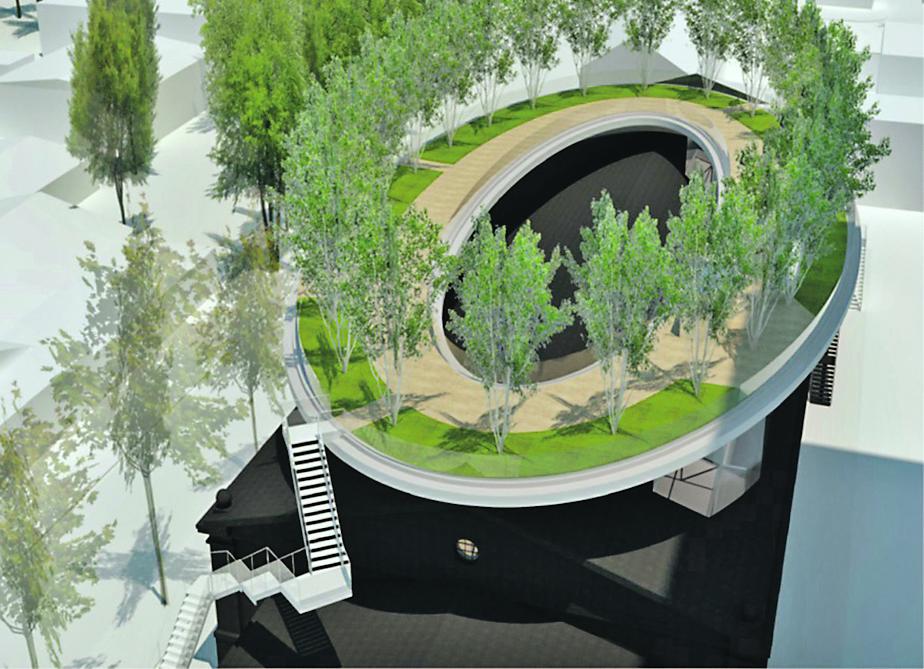 © Sou Fujimoto Architects / Lauba
© Sou Fujimoto Architects / Lauba
According to Jutarnji List's coverage of the redesign, by journalist Patricia Kish, the new roof garden space will be accessed by stairs and lift. Zagreb Lauba's design as it stands today was originally made by Alenka Gačić-Pojatina, who will collaborate on the new additions by Sou Fujimoto.
Zagreb Lauba's story dates back to 1910 when it was constructed by Emil Eisner and Adolf Ehrlich for use as a stables and riding school for the Austro-Hungarian army. It later became the weaving mill of the Textile Combine Zagreb, which it remained until being converted to a gallery and event space in 2008.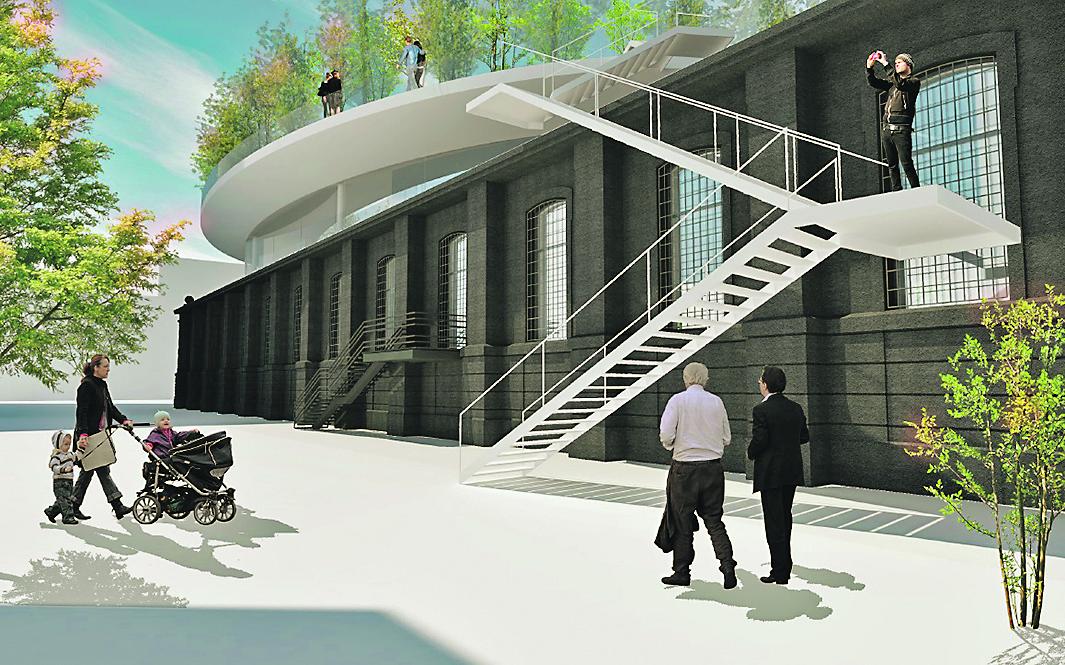 © Sou Fujimoto Architects / Lauba
© Sou Fujimoto Architects / Lauba
Sou Fujimoto is one of the most celebrated architects of Japan. He has won several prestigious awards for his work and the acclaim has made his designs much in-demand around the world. Often working with wood and natural materials, his designs can be found in London, Paris, Budapest and soon, at Zagreb Lauba's hands, in Croatia.
Lauba is a contemporary art gallery and its mission is to discover artistic expression by Croatian visual artists, and also participate in international cultural trends. Set in a huge black building near Črnomerec its exhibitions usually change around every month. In recent times it has also played host to large-scale electronic music events.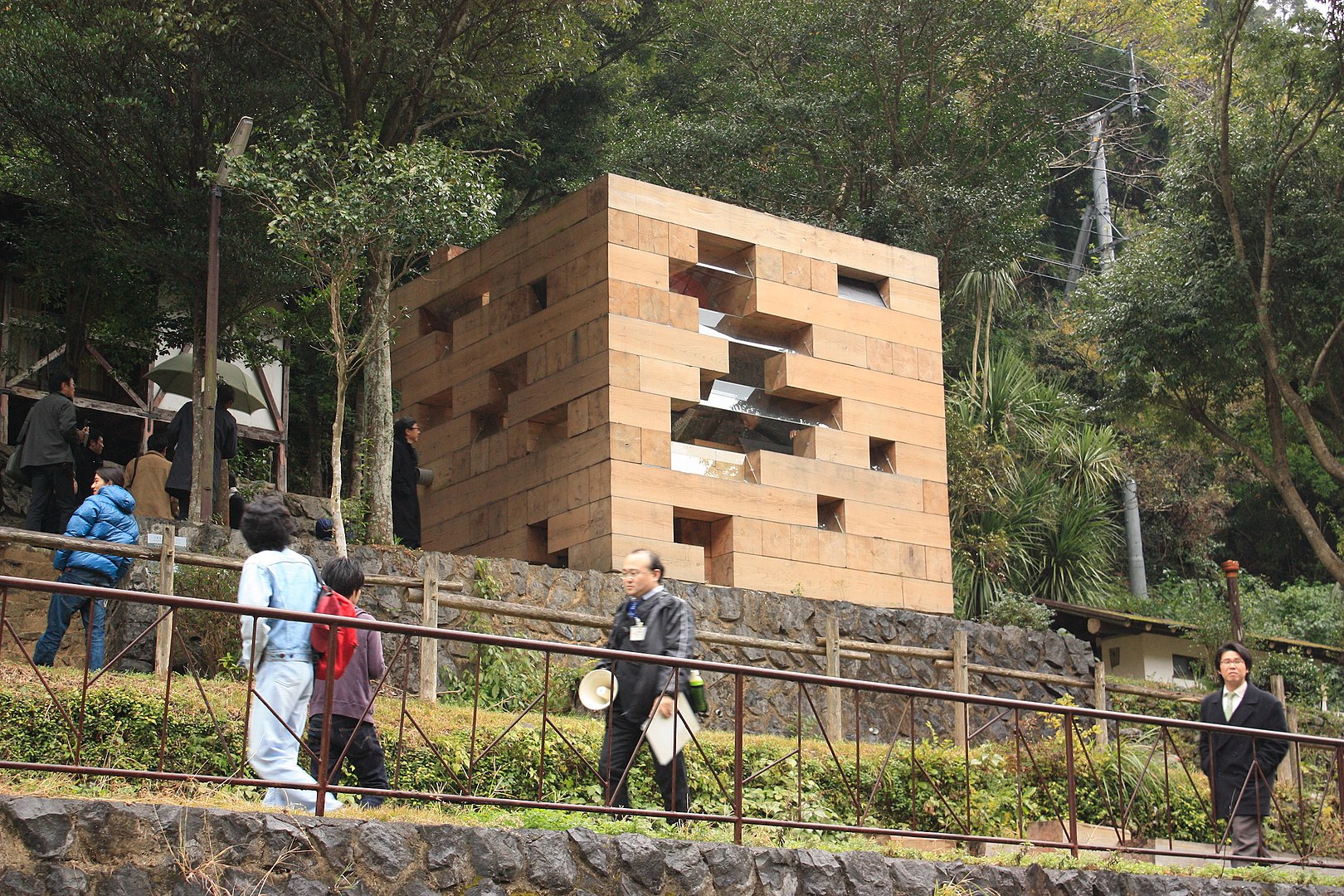 One of Sou Fujimoto's previous designs © Kenta Mabuchi
One of Sou Fujimoto's previous designs © Kenta Mabuchi
PHOTOS: Huge New Street Art by Zagreb's Lunar in Rijeka and Dobrinj
December 2, 2020 – Streets have been noticeably quieter over recent days, although not by one building in Rijeka and a roadside in Dobrinj, Krk island, where renowned street artist, Zagreb's Lunar, has left two huge new murals
The cafes are closed but, what's more, there's a chill in the air. It's not only the lockdown that has made the streets of Croatia more quiet than usual at this time of year. Over recent days, temperatures have dropped to around zero when the sun falls. And it falls early. The light can be gone by 5pm.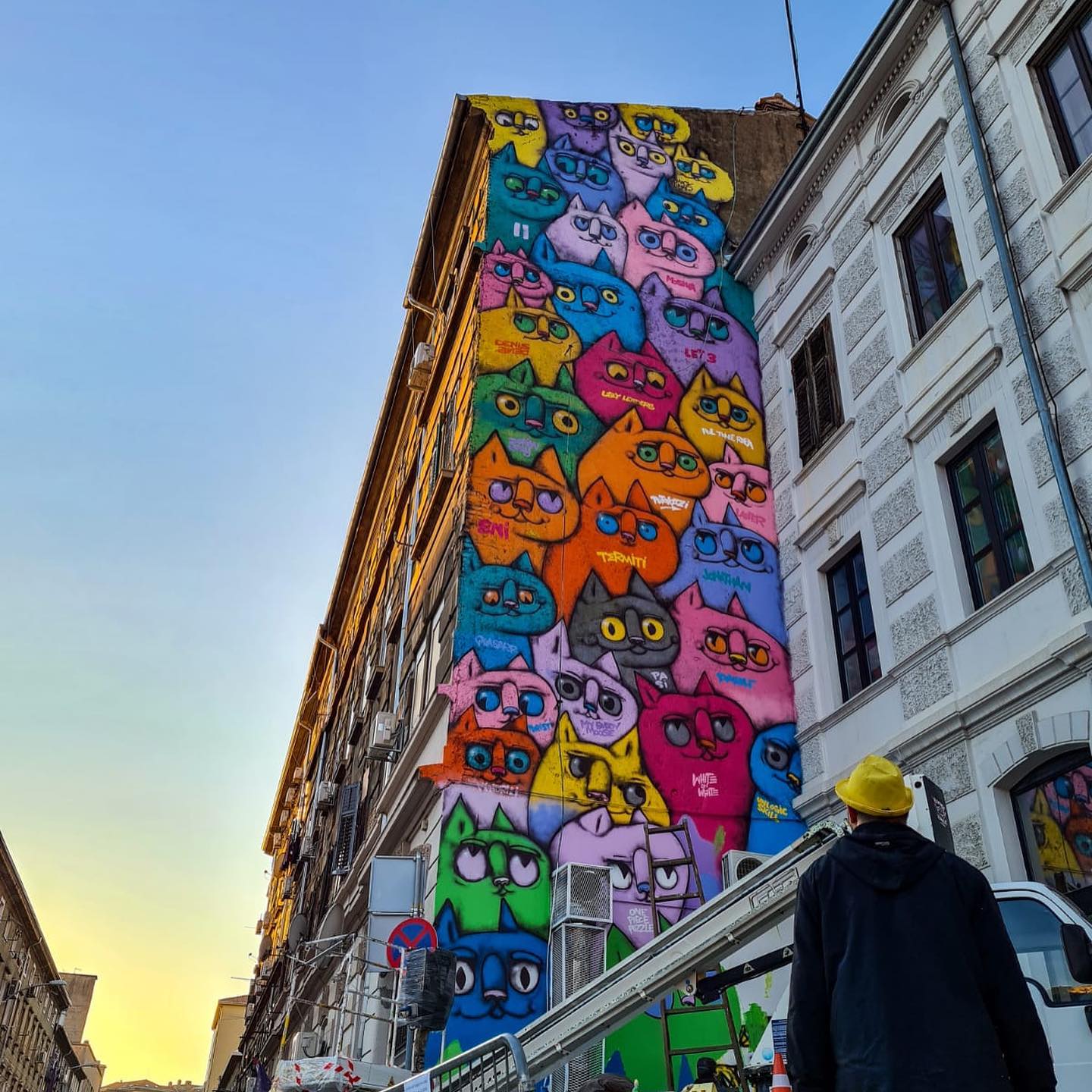 Rijeka
Rijeka
Exercise or a simple pleasant stroll around the Christmas lights have been all that's been drawing folks out onto the streets after dark, save for the food delivery guys whose bikes whizz past you faster than ever in the chill. Even during the day, the streets of Croatia are quieter than normal because of the lockdown.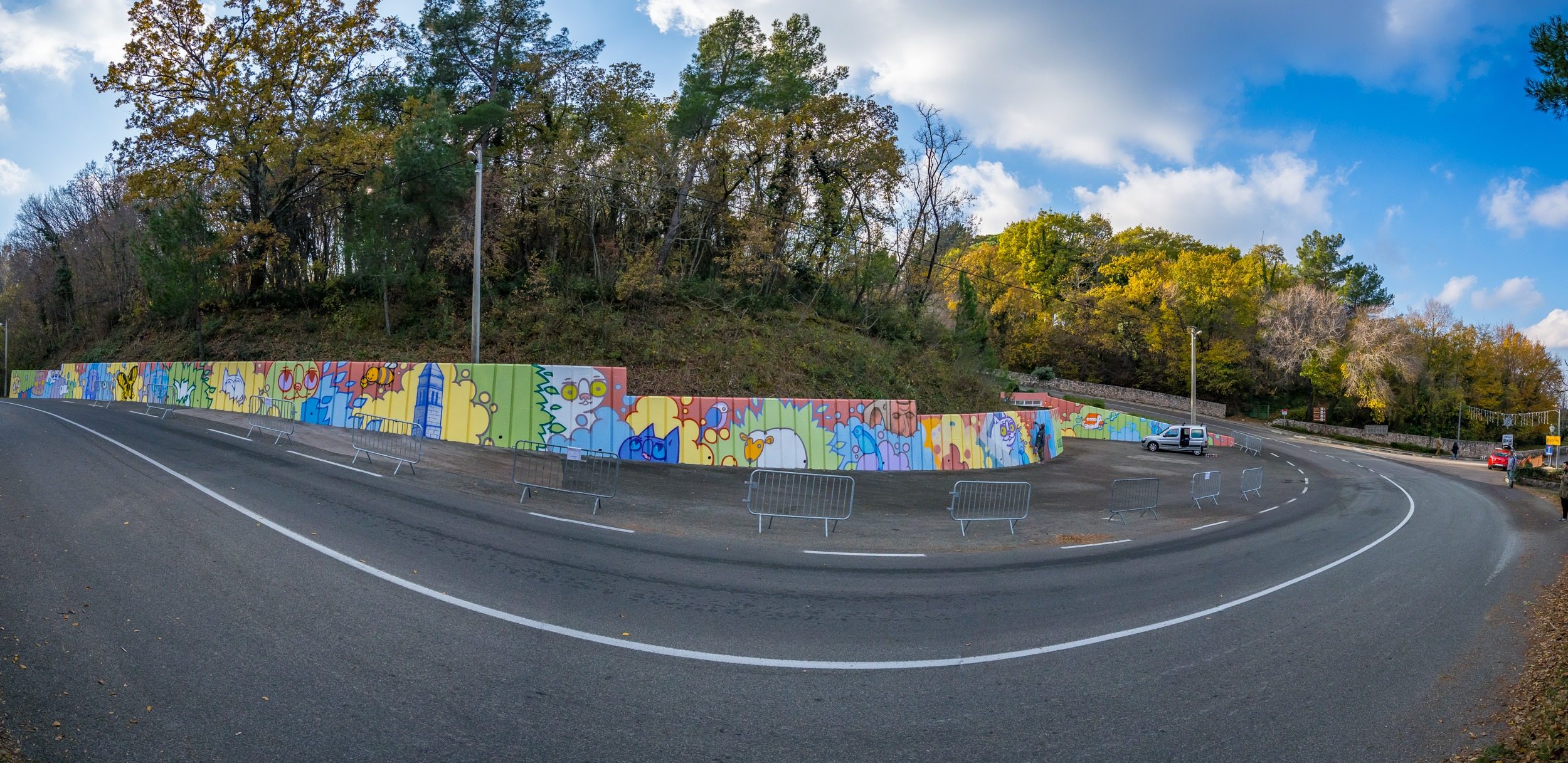
Dobrinj
But, these days haven't been anything other than normal for acclaimed artist Slaven Kosanovic aka Zagreb's Lunar. The cooler temperatures have only meant wearing more clothes and the quieter streets have not made his careful craftsmanship any quicker. His sometimes vast murals often require him to be above pedestrians passing below, up a ladder or even on a crane.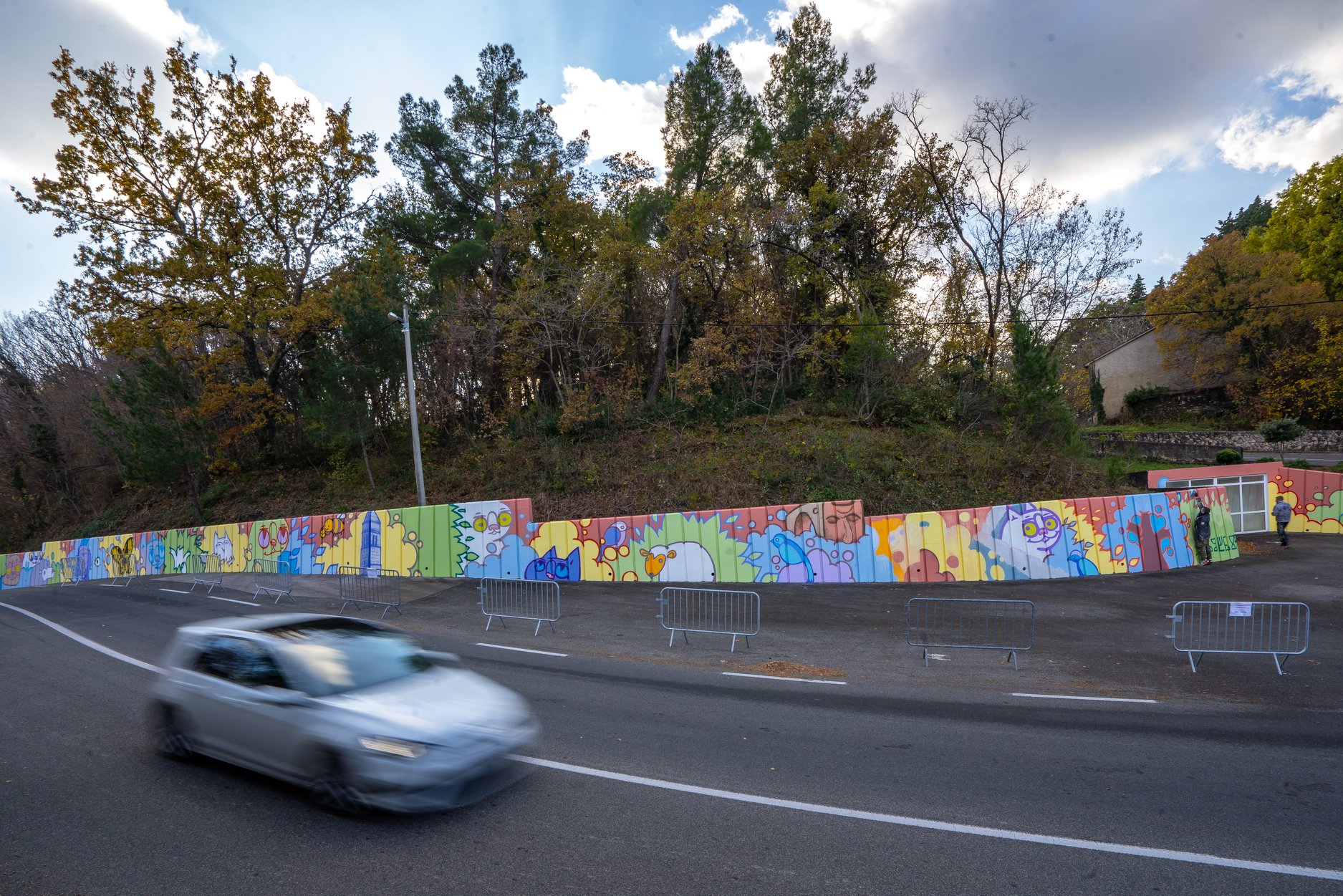 Dobrinj
Dobrinj
The two new paintings of Zagreb's Lunar definitely fall at the larger end of the works he has produced over the last 25+ years. One towers above street level on an entire building facade in Rijeka. So tall is the painting that trying to take it all in could strain your neck in the wrong wind. The other piece, in Dobrinj, Krk island, is just as epic, although this vast canvas lies horizontal, by the roadside.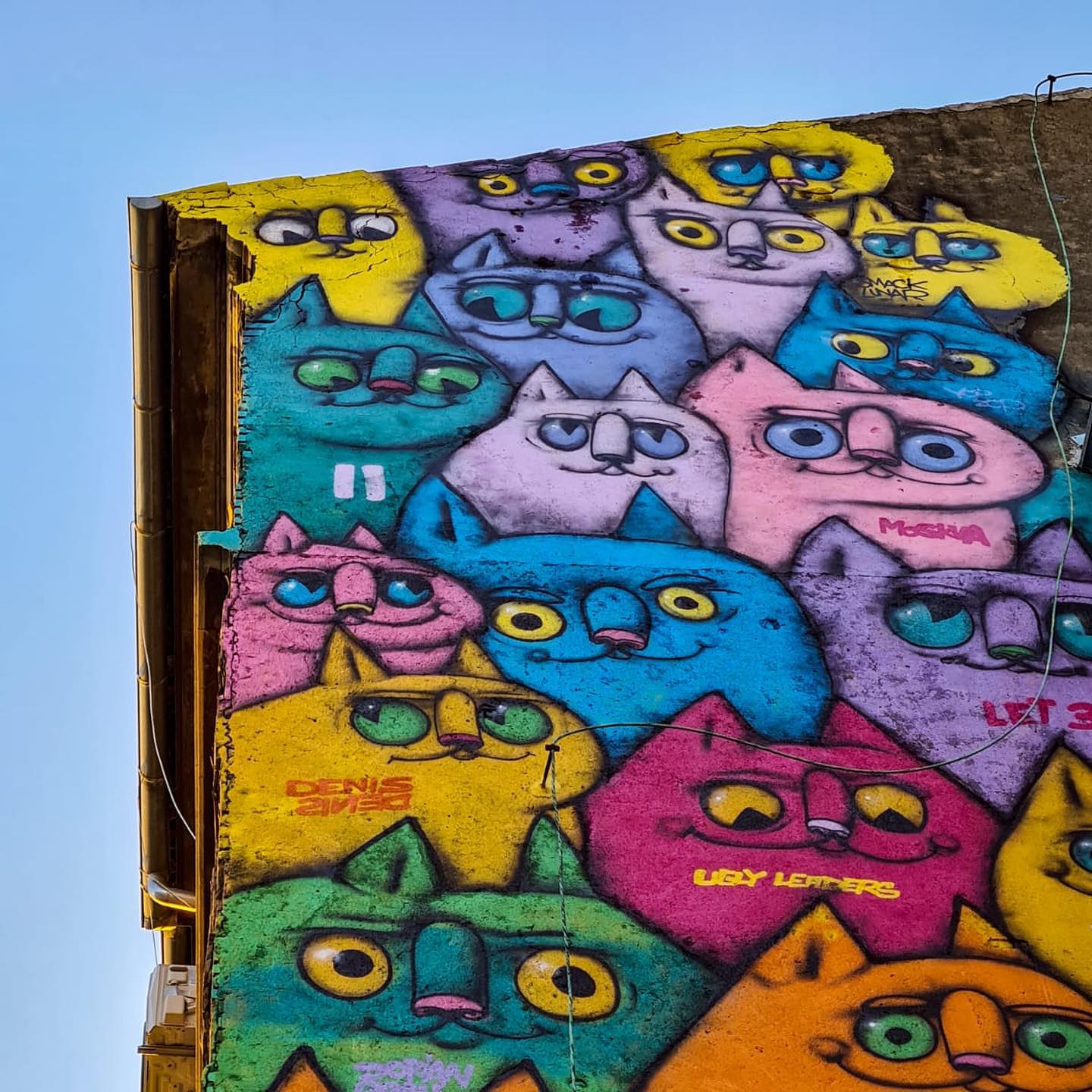 The Rijeka mural is dedicated to the city's music scene - you can spot some of the names of famous Rijeka bands in the painting
The Rijeka mural is dedicated to the city's music scene - you can spot some of the names of famous Rijeka bands in the painting
The Rijeka mural of Zagreb's Lunar, which he painted alongside his brother, with whom he often collaborates, is a four-story wall of cats dedicated to Rijeka's famous music scene. The mural took two days to complete. In the mural, you can spot the names of many Rijeka music groups like The Siids. Let 3, Denis & Denis and Jonathan. The mural is another part of the manifestations organised in celebration of Rijeka 2020 Capital of Culture.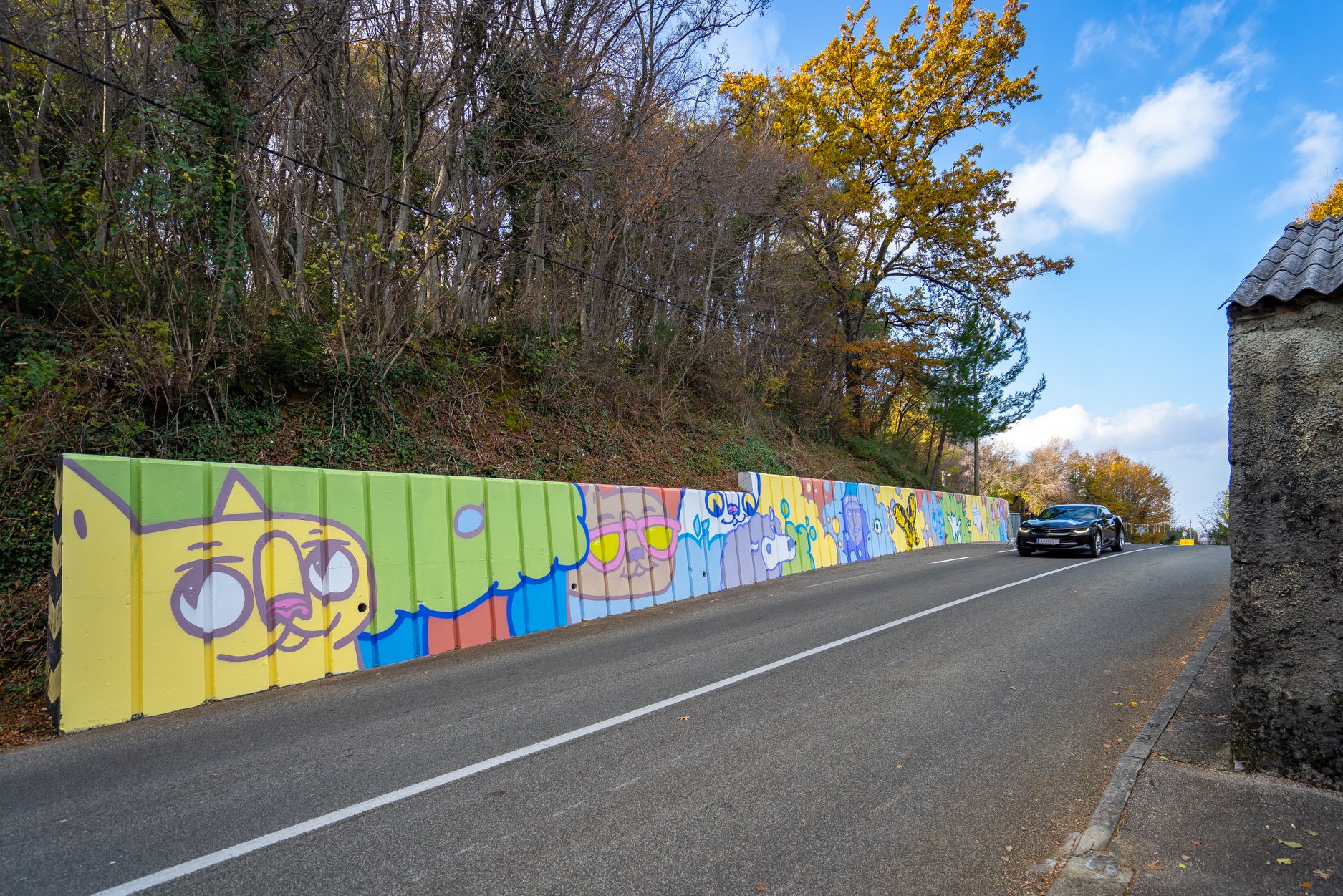 Dobrinj
Dobrinj
Krk island is a well-known tourist destination, but the pretty inland village of Dobrinj is far from the regular path of visitors. Anyone travelling past the enormous mural Zagreb's Lunar and his brother have left here will surely remember the name of Dobrinj. It may well entice some to come looking for it – it is by far the largest piece of public art on the island. It was facilitated by the community organisation Kulturni Dobrinj.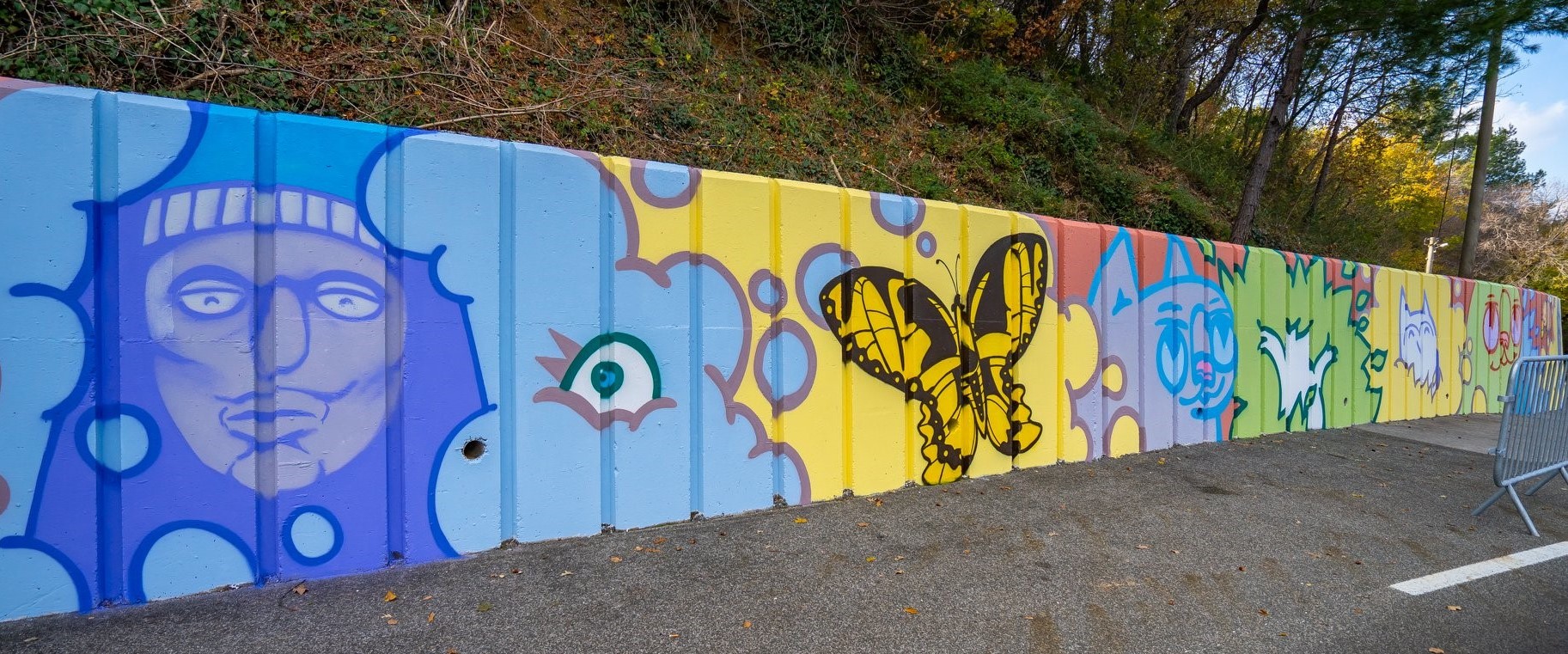 Dobrinj
Dobrinj
All photos © Antonija Diklic (Rijeka) Damir Jevtic (Dobrinj)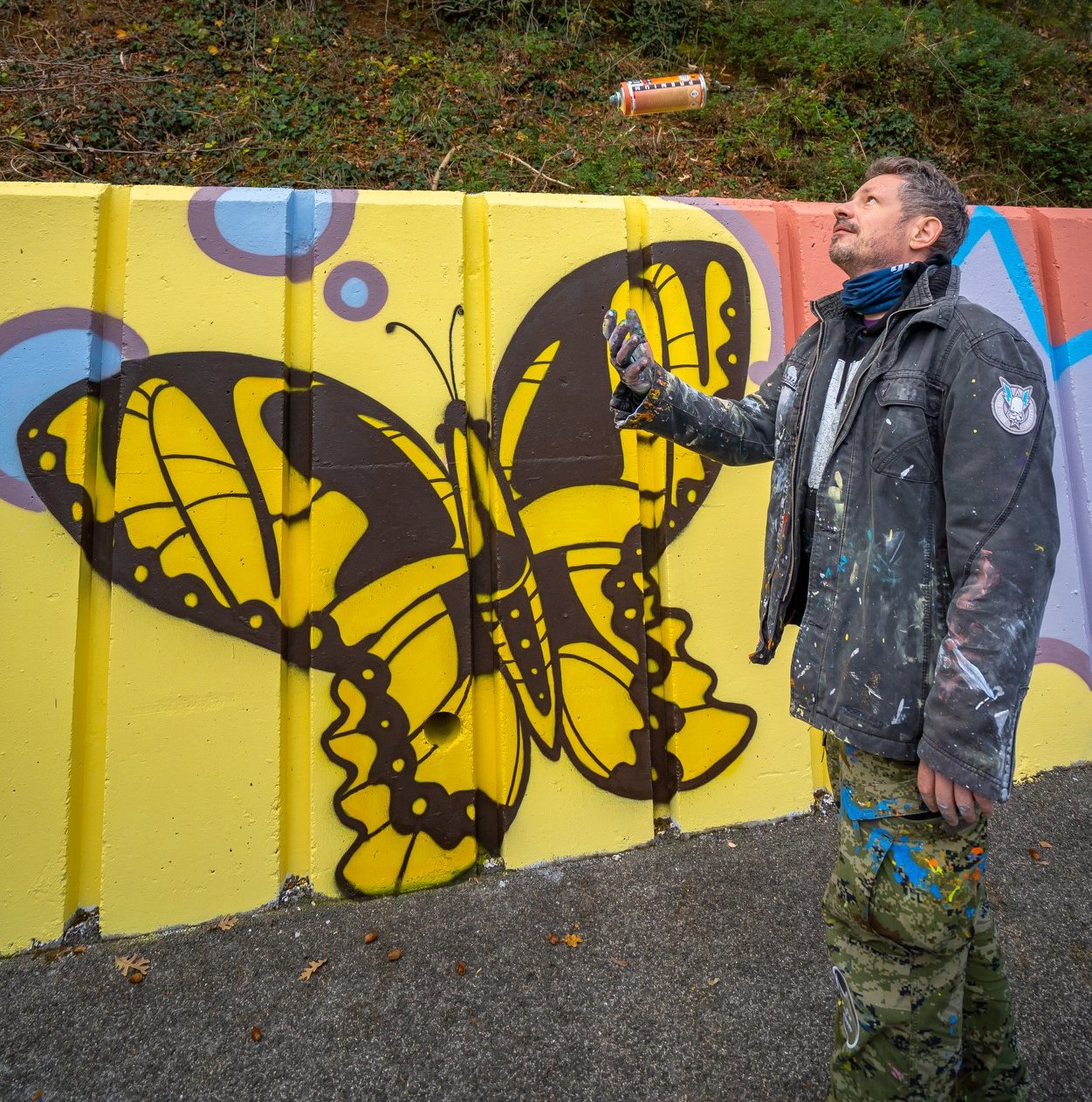 Dobrinj, with the artist, Slaven Kosanovic aka Zagreb's Lunar, on the right
Dobrinj, with the artist, Slaven Kosanovic aka Zagreb's Lunar, on the right
Split Open Jazz Fair 2020 Begins!
August. 28, 2020 - On Thursday, August 27, 2020, with the opening of the exhibition "Jazz Greats in the Ethnographic Museum", the Split Open Jazz Fair 2020 began. It is a photographic exhibition of portraits of jazz musicians by Davor Hrvoj from Zagreb, the doyen of Croatian jazz journalism ("It's time for jazz").
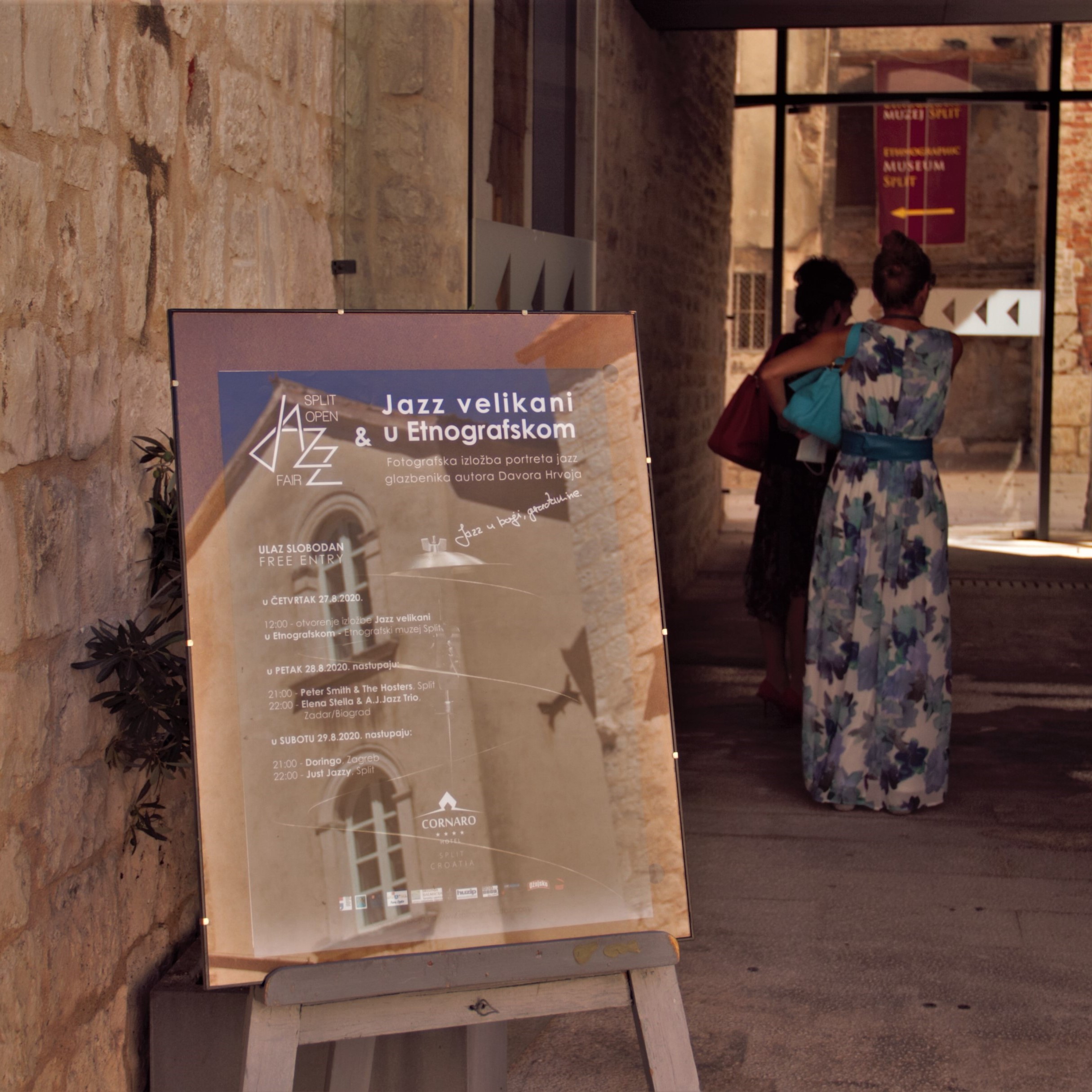
Hrvoj started working in journalism in the 1980s and published his works in numerous Croatian newspapers, such as Jutarnji list, Vijenac, and Gloria. He was a member of the international jury for the European Jazz Prize and is currently a member of several cultural councils and a leader of jazz events in Croatia. Besides, he is a permanent member of the Croatian Journalists' Association as a freelance journalist and the Croatian Music Union, the Croatian Society of Composers, and the Croatian Association of Independent Artists.
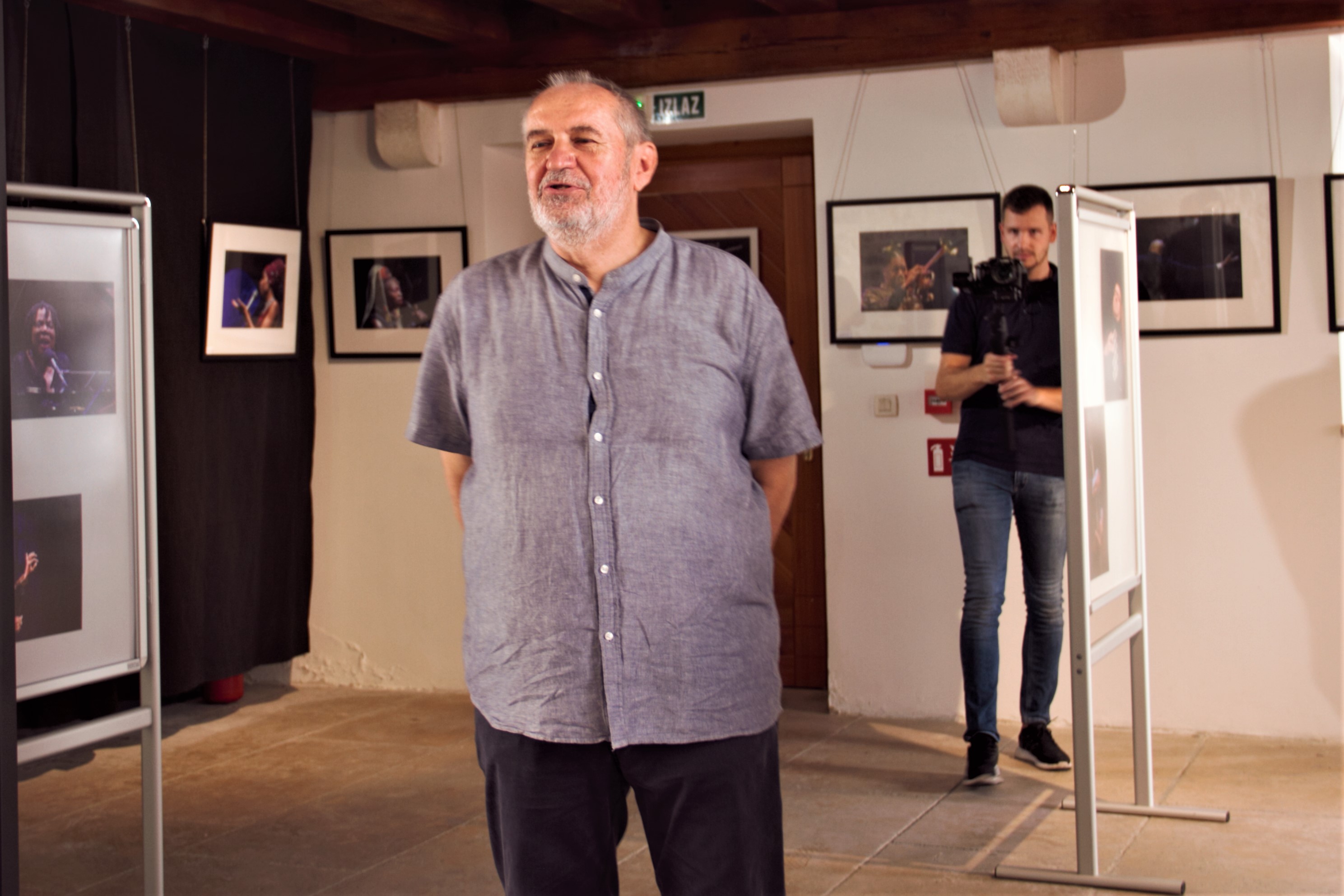
"Why portraits? Because in this way, with the help of a telephoto lens, it's possible to get closer to the gestures of artists and the spirit of jazz music and what musicians feel and the way they think. Unlike most other photographers, I like to wait for the end of a concert, when artists are already losing control of their behavior and their gestures. Then I catch them in those moments when they are truly natural when they are truly what they are", the author explains.
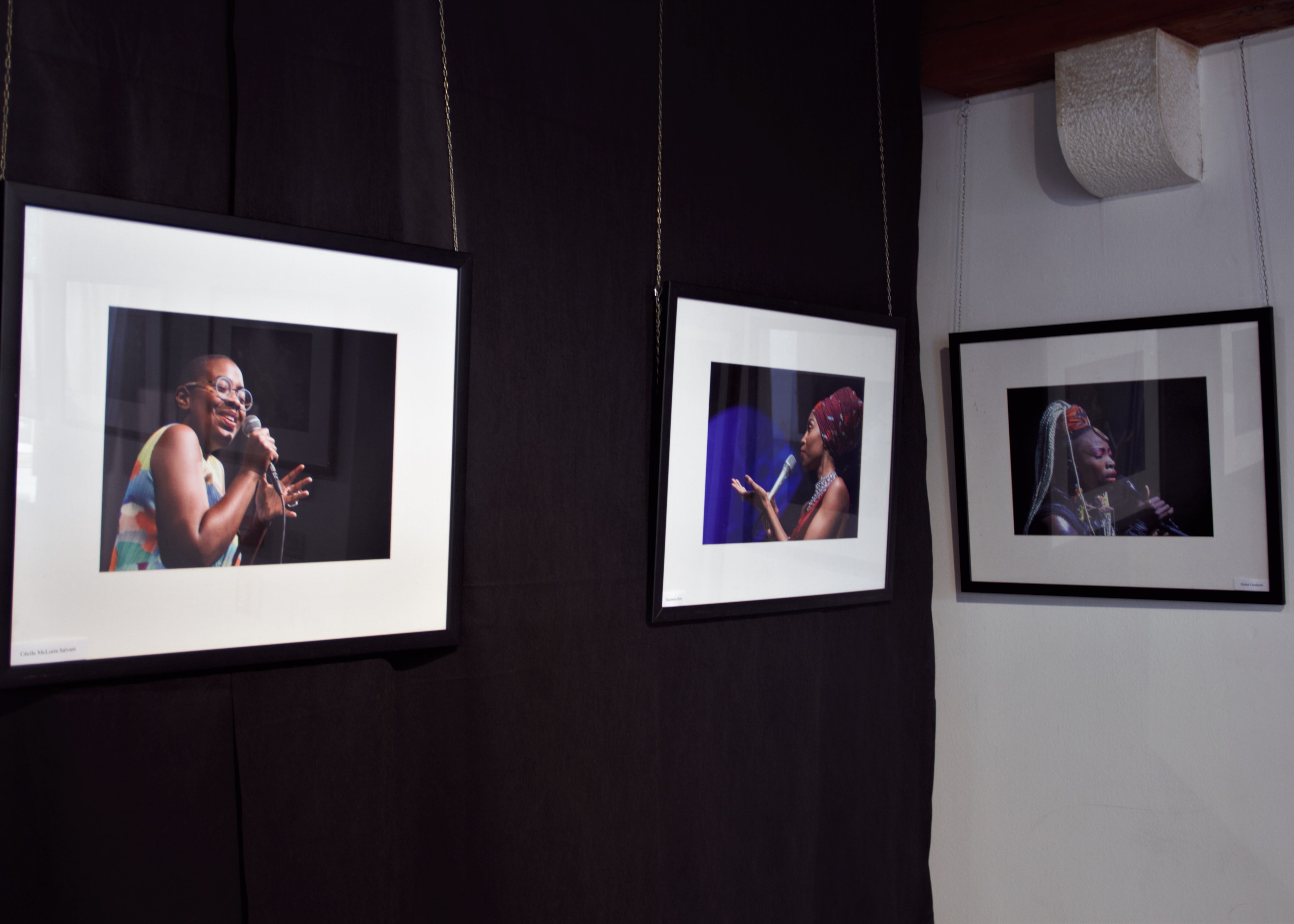
After the opening, there will be two concert evenings at Đardin as part of the Urban Culture Review - EVO RUKE 7 with, as always, free admission. The exhibition is open to visitors until 18.09.
"Since jazz is my life, as is theirs, this is how I try to capture the essence of jazz", Hrvoj concludes.
The program for two evenings of the concert program can be found below.
On Friday, 28.08.2020. perform:
21:00 - Peter Smith & The Hosters, Split,
22:00 - Elena Stella & A.J.Jazz Trio, Zadar/Biograd
On Saturday, 29.08.2020. perform:
21:00 - Doringo, Zagreb,
22:00 - Just Jazzy, Split
For the latest travel info, bookmark our main travel info article, which is updated daily.
Read the Croatian Travel Update in your language - now available in 24 languages
Art Corner: Follow Your Heart, Act with Humility and Gratitude… Words and Interview from Broken Isn’t Bad.
24th July 2020, The world is a crazy place to be right now, let’s pause for art, beauty and truth – an interview with ‘Broken isn’t bad’.
Let’s face it, there is a lot going on in the world, so I wanted to write something a little different and promise not to mention Corona (Covid 19) too much but it is where this story starts so bear with me for a second.
Lockdown was a very personal experience for everyone, my time was relatively pain-free (you can read my impressions here) and led me to re-evaluate every area of my life, particularly how I spend my time and where I spend my money. With so much extra time on my hands and social media being a vice (for many, I’m sure) – I decided to ‘clean out’ my social media so it provides more value.
I started following more thought leaders, writers, poets and artists. I have always loved art but once I started following more artists, I realised just how much joy (and inspiration) art brings me. I stumbled across an artist that I loved on first sight, made better by the fact that all of the illustrations are accompanied by a wide range of deep, thought-provoking or spiritual poems and texts (all the things I love in one place). In line with reassessing my other value – ‘where I spend my money’, I decided to buy a piece of art. Only upon looking further at the Instagram account did I see that this artist was in fact, from Croatia and then after messaging, I discovered that Sanda (the artist behind Broken isn’t Bad) lives in the city of Čakovec (90 km North of Zagreb).
The account is called Broken_isnt_bad and has an impressive 525,000 followers, how could I not reach out for an interview? In these crazy times, where so many are struggling, particularly artists, I wanted to share a success story and hopefully some words of inspiration.
How long have you been an artist and where did you study?
I studied graphic design at the Faculty of Graphic Arts, University of Zagreb from which I graduated in 2012 and, in 2016, I opened my Instagram account and started posting my drawings under the pseudonym Broken isn’t bad, while simultaneously working in a big corporation as a graphic designer. It was a period of my life when I felt quite depressed and unmotivated. I was really unhappy with how everything works in those big companies where you cannot express your creativity as you’d like to, and where you must obey those above you who don’t have a bit of creative talent but think they know better than you. Also, my long-term relationship ended in quite a bad way and I felt really broken in a psychological sense, so it’s amazing how my artistic profile actually showed me how to move forward and regain happiness and peace in my life.
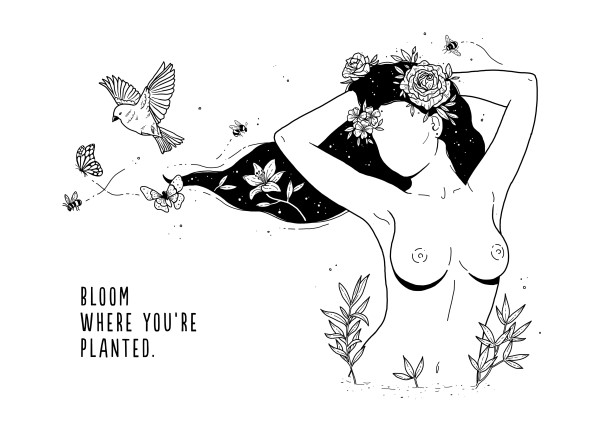
"Bloom", Broken isn't bad
Did you always know this is what you wanted to do or did you try your hand at other careers first?
Not at all. I never thought I would make a career as an artist nor had I planned it. I had been searching for my passion for quite a long time and since I’ve always loved creatives stuff, handcrafting and drawing, graphic design seemed like the best choice to study at the time. During my student years, I started to be more interested in art in general; especially illustration, tattoo and street art and I started learning to draw in creative software such as Adobe Photoshop and Illustrator. I found a job as a graphic designer soon after I had graduated, but had never been able to fit in, so I started drawing as a hobby, just for myself, in order to find a way out of that uptight place that suffocated me, but have never expected it would lead me to the place I am right now.
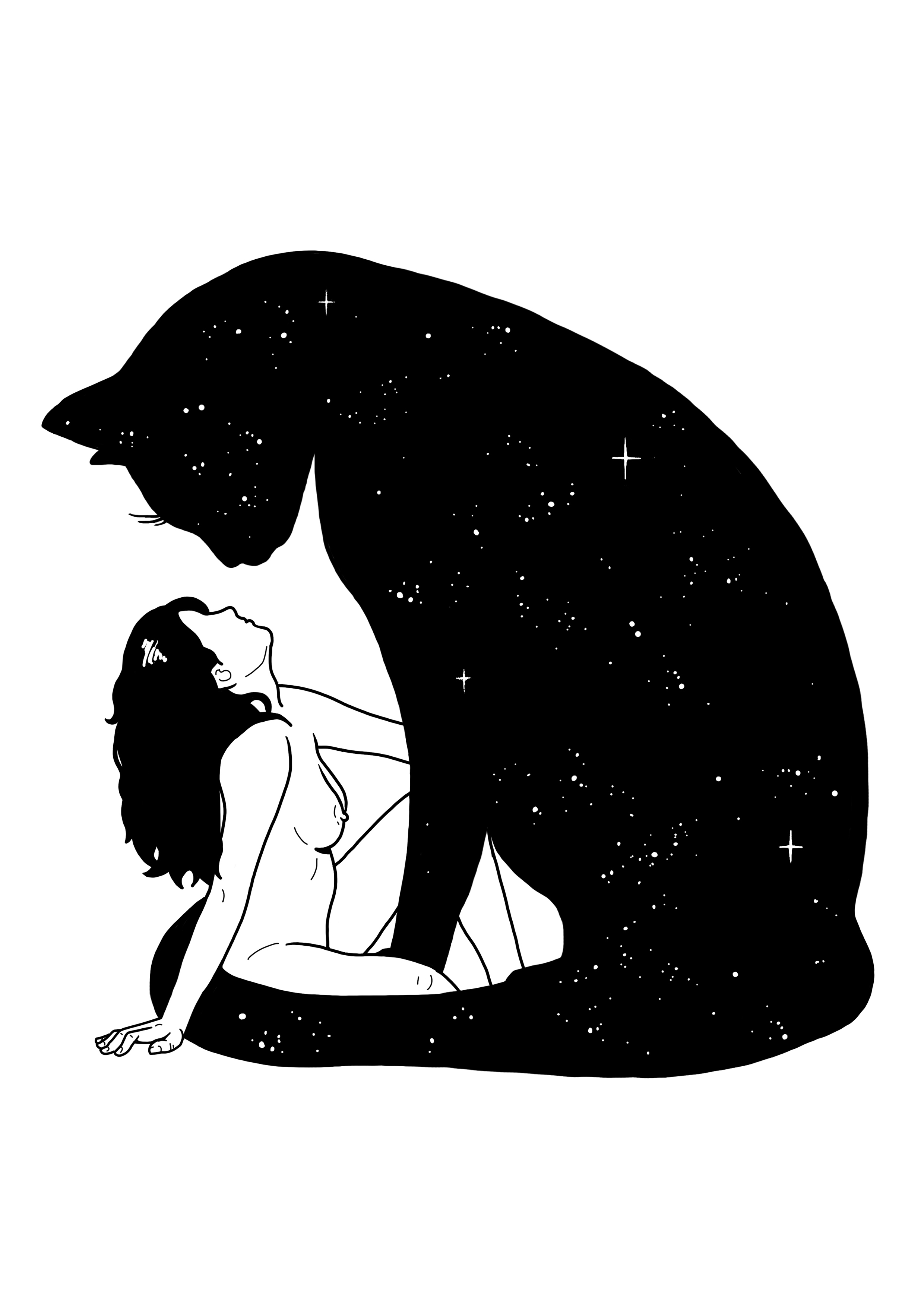
Cat girl, Broken isn't bad
I see you have a strong social media following; how long have you had your Instagram page and when did you first start seeing movement on your page and reactions to your art? That must have felt so rewarding?
I opened my Instagram account in January 2016 at the urging of a friend who was among the first ones I showed my drawings to. As I can recall, it was only a few months after opening it that I started receiving positive comments, tattoo, and commission requests and started seeing a linear growth in following. Since then, everything has been surreal and happened so fast. I’m not sure how exactly I’ve built my loyal fan page, it somehow happened by itself, maybe because I wasn’t expecting anything and was true and honest with myself, so people found something familiar in my work, something to relate to. It has been definitely rewarding!
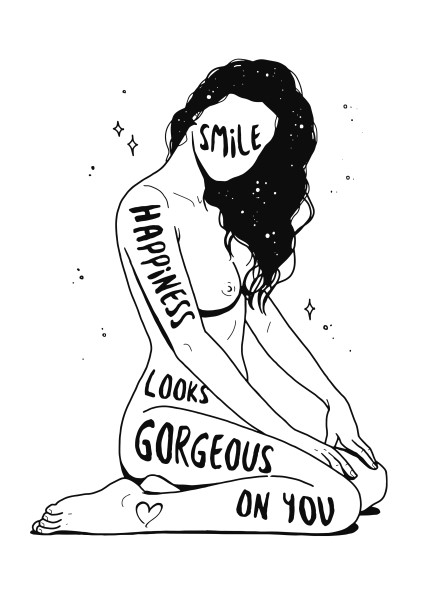
"Happiness, Broken isn't bad"
Being an artist or creative is never an easy path in regards to making a living, and Croatia is a country which can be tough in general. How has your journey been and can you make a living just doing what you love?
The first year (2016) was the most difficult because I needed to balance my day job and my hobby (I mostly drew in the late evenings and nights), but at the same time, it was most enjoyable because I was working just for myself and didn’t worry about how many people liked my work or were buying from me. But the most challenging was quitting my full-time and well-paid job in 2017. If you're going to dedicate yourself to starting your own creative business, it's impossible to manage another career/job. In other words, you have to quit your day job and walk away from a steady long-term opportunity for something unpredictable and scary. You never know how profitable your business will be in the future, will you be able to give yourself a pay-check every month or whether customers will like your products. That was the greatest challenge I’ve experienced so far, but I’m so happy I followed my heart.
In 2018 I opened a legal small business here in Croatia, and I am now able to make a decent living by selling my prints and working on customised artworks. It’s the most rewarding and enjoyable job ever. Being my own boss, I love that I have flexibility in schedule. Having that work-life balance keeps me engaged and excited.
Coming from NZ – which, in general, has a very optimistic attitude and moving to Croatia, one of the biggest differences I noticed was the mentality. I don’t know how many times I have heard the phrase “ne može to” or “that won’t work” – did you find the same in regards to pursuing a life in the arts?
Being born in the northern part of Croatia - Međimurje, I am lucky enough to be raised with a different mentality than it is in the south. To be honest, I have never heard the phrase “ne može to” here where I live, and I didn’t have any difficulties in regards to pursuing a life in the arts – especially not coming from other people telling me that it won’t work. My family and my friends have never discouraged me, just the opposite - they have been there on my side from the first day. When I told them that I was planning on quitting my job before I found a new one - they were nothing but reassuring, believing in me, my talent, and abilities.
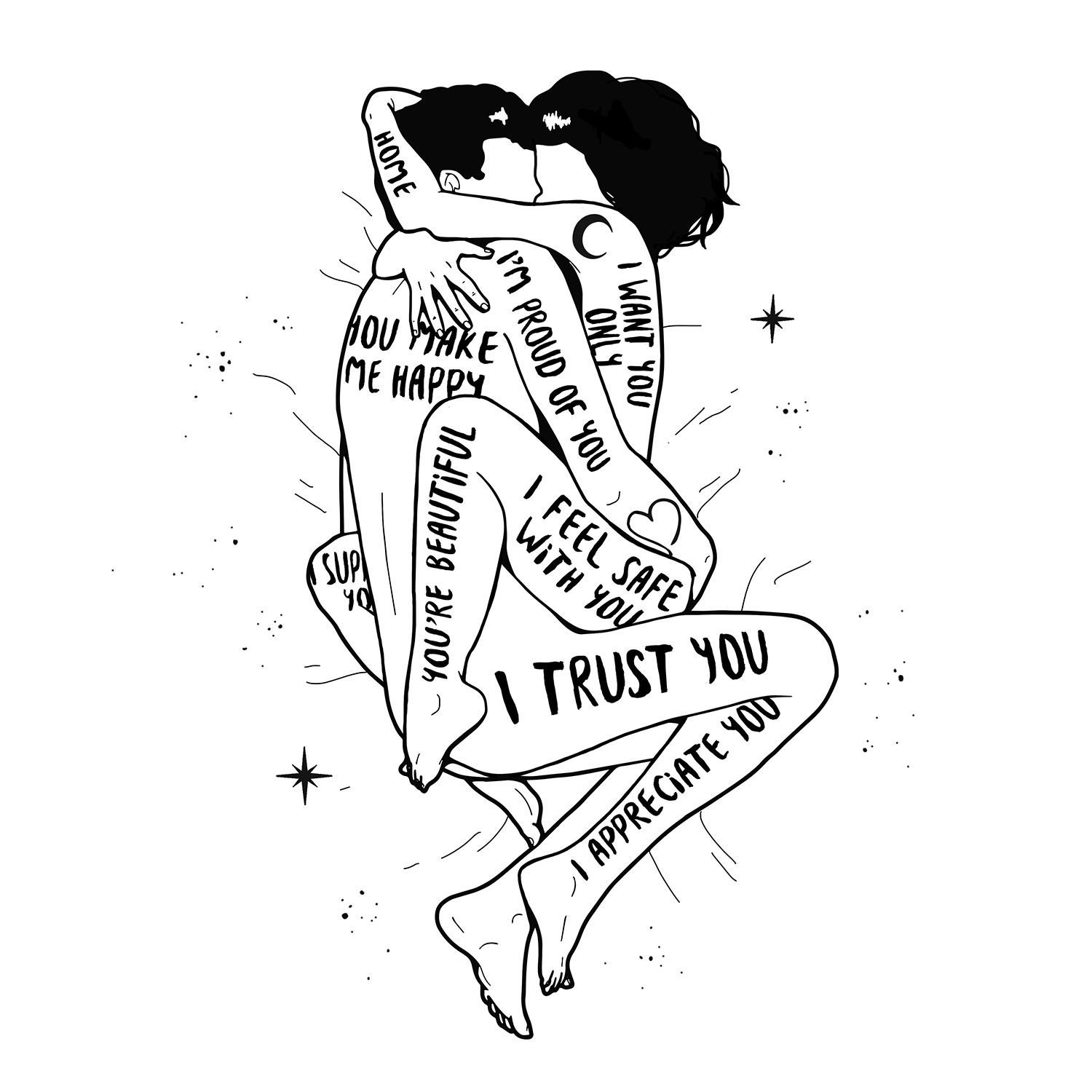
I trust you, Broken isn't bad
Social media is a powerful platform (it’s how I found you on Insta!) has this been one of your strongest tools or how else have you marketed yourself and your art?
Instagram has definitely been my strongest promotional tool since I opened it in 2016 and it keeps being such. I made Facebook page a year later, but it’s not that powerful and I don’t spend as much time there as on IG. I get most inquiries for commissions, tattoos, and prints, as well as nice words of support from my followers, via Instagram and it’s the easiest way to communicate with them.
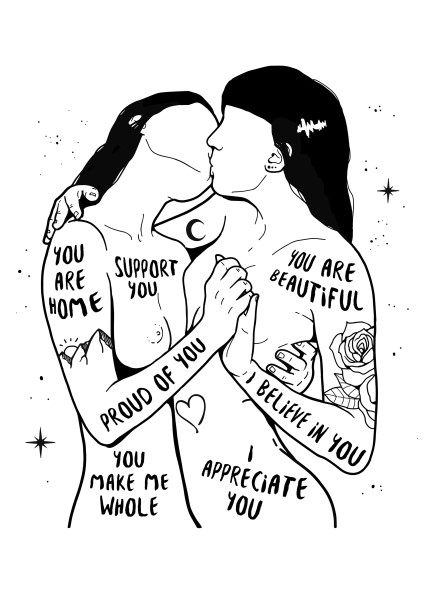
Love is Love, Broken isn't Bad
You have some beautiful, thought-provoking and powerful pieces; I loved seeing the same-sex option for your artwork in regards to love. In a very conservative country, this is a bold (and beautiful) move, what are your thoughts on this?
Sexuality for me means revealing the inner self and showing your vulnerability but at the same time, embracing it as your greatest strength. Most of my illustrations depict naked women and I try to mix eroticism with familiarity and surrealism – to show we are so much more than just skin and bone. With my illustrations I try to help individuals feel good about themselves, to find that invincible power which connects them with their inner selves in order to create a positive relationship both with themselves and with their partners – and I don’t want it to be exclusive to heterosexual people/couples – we are all human being and deserve the right to express our own sexuality.
Fortunately, majority of my following is from the US, Australia, Canada or Western Europe where those “controversial” pieces aren’t an issue. Growing up in Croatia where everyone who does not look or behave in accordance with general social norms provokes negative glances and cannot feel safe in their own neighbourhood, definitely plays a role in what people find offensive, provocative or controversial. I understand my work can be seen as a direct insult to peoples’ religious beliefs, but I try to ignore the negative comments and reactions and focus on an audience that values freedom of expression.
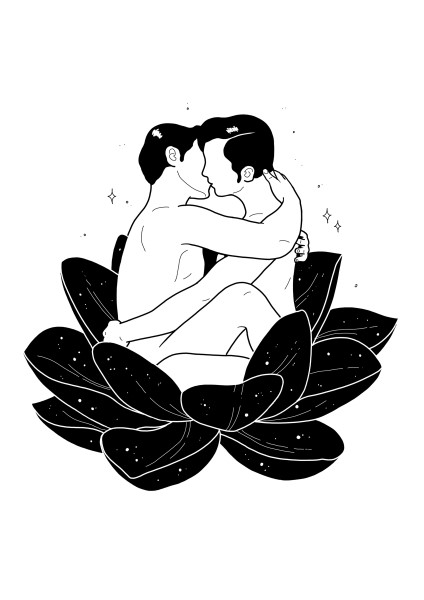
"Lotus Man", Broken isn't bad
I saw on your page that you are inspired by your own thoughts, experiences but also by a lot of poetry – are these your main inspirations and who are you favourite poets?
For me drawing is a form of meditation. I mostly create for myself (at least that was in the beginning) in order to express what I see and feel for my own self-healing purposes. Ever since I was little (and used to read a lot more than nowadays), I have been writing all those wise words from books, articles, songs, movies in my diaries. It was the quotes that led me to drawing and made me discover my true passion, so for me, it isn't just about quoting somebody else's words, it's about creating something out of it and healing myself at the same time.
My greatest source of inspiration has been words from poets and writers, like Rumi, F. Pessoa, P. Neruda, M. Angelou, E.E. Cummings, R.M. Rilke, O. Wilde, R. Payne, H. Murakami, F. Scott Fitzgerald, just to name a few, but I am also interested in yoga philosophy, astrology and spirituality, therefore, the quotes from motivational and spiritual speakers/teachers have also influenced my work quite a lot.
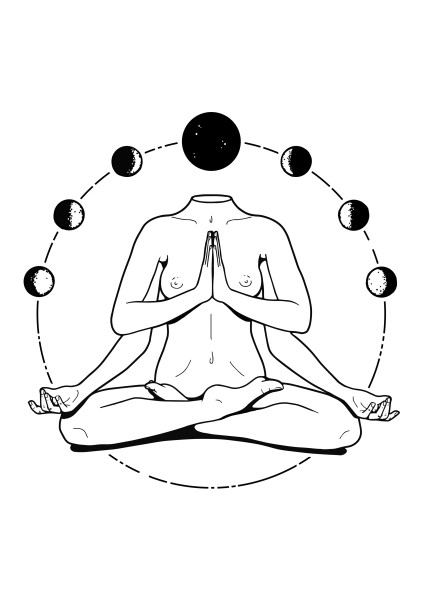
"Meditation", Broken isn't Bad
Which Croatian artists or authors do you admire or have been the greatest inspiration for you?
My greatest inspirations have been tattoo artists across the world who I have been admiring on Instagram and other social media for years. I’ve been always a big fan of tattoos and would say that tattoo art actually drew me to my style. Unfortunately, not many Croatian tattoo artists are there that would inspire me, since the scene is still quite small in our country. But I’d love to mention a few other artists who I admire very much; Korovles, Maja Tomljanović, Lara Zigic, Kvar illustration, Klarxy, 3Oko, Hana Tintor…
In these crazy times of the coronavirus pandemic, many are losing their jobs but I see it could be an opportunity for some – especially in regards to online work or using social media to our advantage. If you were to give one piece of advice to the youth of Croatia in regards to the opportunities that exist (if you believe they do), what would that be?
I would say go for it! Go for your dreams and follow your passion - there’s nothing to lose! Honestly, I don’t think I would have an art career without Instagram. It has definitely been vital for turning my hobby into career, and I’m always happy to see and be able to follow new young illustrators/painters/DIY workers/musicians/hand-makers etc., especially from Croatia.
Permanent Internet access and use of social media have played a big role in artistic world and have opened up the opportunities for many people to curate their own personal gallery on social networks, build their own client base and spread their artistic message into the world. Even artists who use traditional techniques increasingly use digital technology to expose their work making it more approachable to a wider audience. Art is becoming more popular and we are starting to see a wider array of artist and their vision that otherwise would be overlooked.
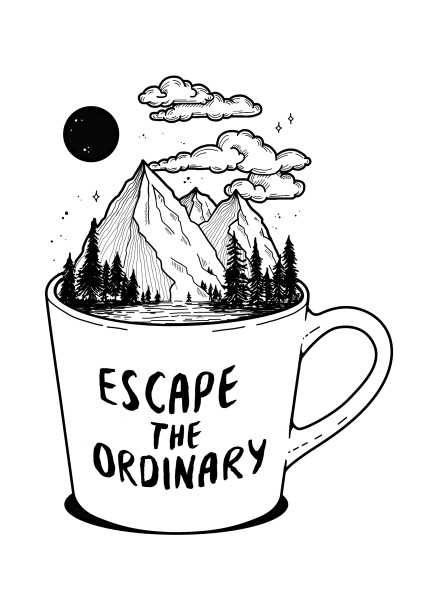
"Escape the Ordinary", Broken isn't bad
What would you say to anyone else who has an artist’s heart but doubts they can make it?
Do not compare yourself to others, you are neither better nor worse than those next to you – we all have our place in this world. Pave your own way and most importantly – be honest with what you create, stay humble, grateful and aware of your mistakes as well as your achievements. It always shows new potentials and ways to evolve and grow your craft. Magic happens when you step out of your comfort zone. Don’t be afraid.
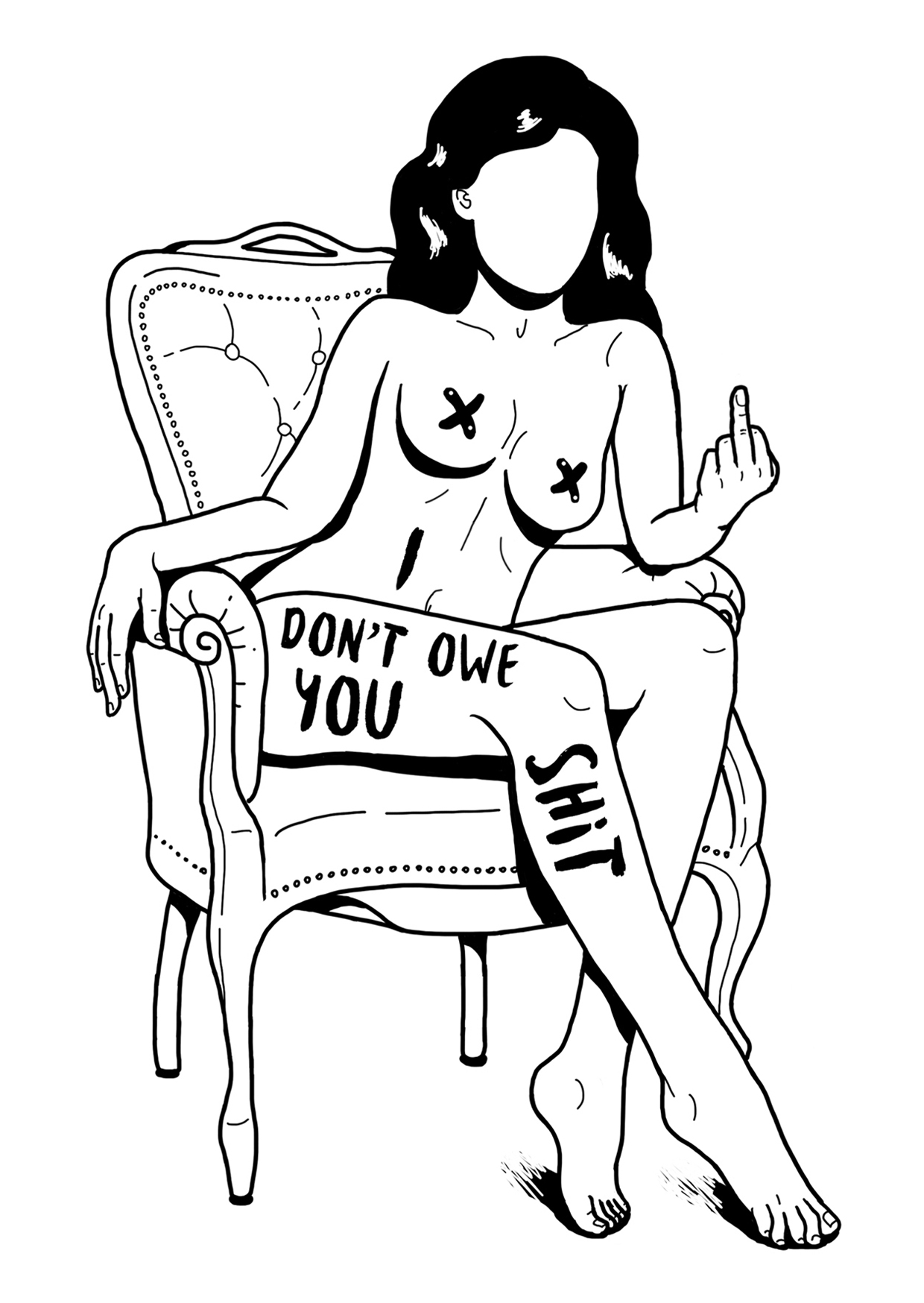
"I don't owe you", Broken isn't bad
Closing comments
The world is undoubtedly an uncertain and scary place at the moment but words (and art) like this remind me that there is still beauty in the world. This is by far one of my most favourite interviews, a breath of fresh air with honest and inspiring responses – follow your heart, stay true to yourself, take the risk, act with humility and gratitude… timeless messages that we all need to be reminded of from time-to-time. If you want to see more from Sanda, you can find her works on Instagram under broken_isnt_bad or check out her website for prints and more information.
All images were provided by broken_isnt_bad and are subject to copyright.
In Croatia Public Art Is Destroyed And Replaced With... Nothing
July 17, 2020 – Zagreb's residents have voiced outrage at the removal of a beloved work of art, replaced by nothing. But is this really anything new for Croatia Public Art?
Over the last 24 hours, residents of Zagreb have voiced their outrage at the removal of one of the city's best-loved pieces of street art. 'The Little Prince' had sat in Čulinečka ulica in the Dubrava neighbourhood since 2016. But now it is no more.
Inspired by French writer Antoine de Saint-Exupéry's children's novel - one of the world's best-selling and most-translated books – the mural was placed at the end of a busy underpass. As such, it was a colourful piece of Croatia Public Art, a welcome for motorists entering the drab, grey concrete of the city, stuck in traffic, on their way to another grueling day of work.
Updates to the story have revealed the culprits to be fans of the local football team, Dinamo Zagreb. They had been given permission to paint yet more murals of their logos and slogans on the rest of the underpass, under the provision – according to neighbourhood authorities who granted it – they did not touch the existing artwork. But they did. Where once was placed an inspiring and cheering mural, there now sits nothing.
Representatives of the largest organised group of Dinamo supporters – known as Bad Blue Boys – have, at the time of writing, failed to comment on the affair. Perhaps they weren't aware of the Dubrava sect's actions? They certainly don't appear capable of reprimanding their own members. So much for claiming to be 'organised'. Or perhaps they're just exhausted by all the bad press?
In recent memory, the Bad Blue Boys have repeatedly hit the headlines and, to be fair, not always for such reprehensible, thoughtless behaviour. Following Zagreb's 2020 earthquake, supporters came together as some of the first responders at the scene of a hospital, where they assisted in removing infants from the damaged wards. Bravo! But, then young supporters were pictured with a banner bearing the scandalous words “We will f*ck Serbian women and children”
Representatives from the Bad Blue Boys were quick to denounce the disgusting banner. Bravo! However, they implied the wording was only problematic as it pertained to pedophilia. Eek. And, within 24 hours, the same voices were raging about anti-Croat slogans used by Serbian football fans, in that classically Balkan method of argument where you ignore the issue at hand, point somewhere else and say “But, they are much worse!”
With the removal of 'The Little Prince', this time they seem to have gone too far. All but the most insecure and ardent of supporters have turned on the Bad Blue Boys, labelling them hooligans, idiots and selfish. Comments under news items covering the story are filled with angry criticism for the football fans.
“They like to paint themselves as hooligans who we should all fear,” one angry Zagreb resident who wished to remain anonymous, told TCN, “but really they can only paint their retarded logos. They piss all over the city like feral dogs marking their territory. Their murals are already on walls everywhere, why destroy this art? Everyone loved it! They are not even real football fans, let alone hooligans. They boycotted (attending) because of the club's (allegedly) corrupt management, but as soon as the club released 1 Euro tickets, stadium was again full. For 20 years they shout and spray (paint) fake anger over corruption at the club, but they don't do a thing about it. The same people are still in charge and the stadium is full of these so-called fans. Can you imagine that happening in a football club in your country, in Spain, in Argentina, in Brazil? No. Impossible. Such corruption would not last a year before fans removed them. The corrupt would be assassinated if that's what is needed (to remove them). They are not Bad Blue Boys, they are Big Blue Babies. They are dogs with loud voice but absolutely no teeth”
The anger of Zagreb residents is palpable. But, can we blame the pointless and saddening idiocy of this affair on the Bad Blue Boys? Like the disgusting slogan on the teenage supporters' banner, such rhetoric does not appear out of thin air. Actions like these are sadly learned. And the country has an established history of needlessly destroying Croatia Public Art and replacing it with... nothing.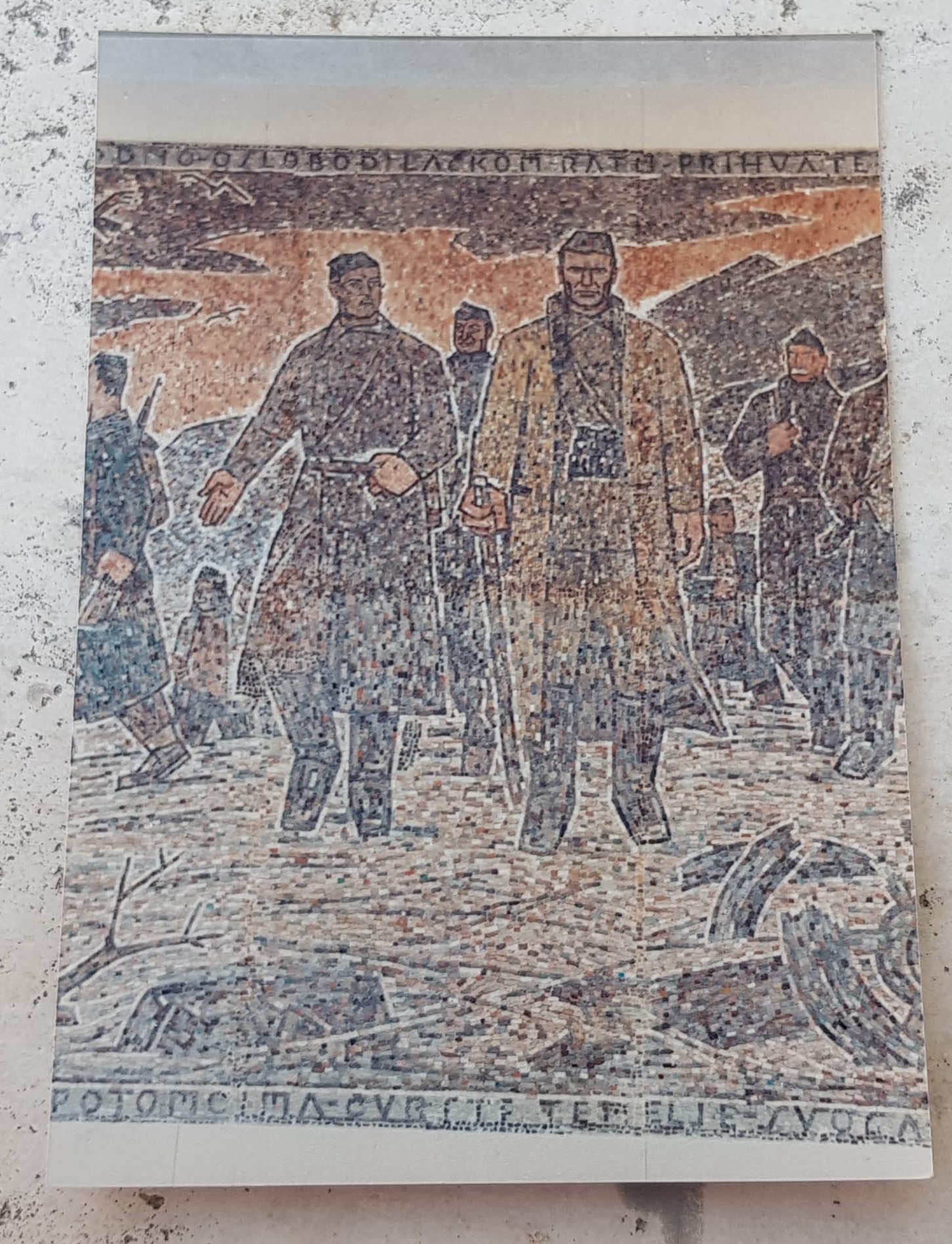
A photograph of a small section of Ivan Joko Knežević's mosaic in Omiš, the only record in colour remaining of this piece of Croatia Public Art © Knežević family archives
The long-cursed bottleneck on the Jadranska magistrala (Adriatic highway), the Dalmatian town of Omiš, is now fighting to attract the kind of footfall that its neighbours Makarska and Split experience during summer. And, sitting at the mouth of the Cetina river, it sure does have a lot to offer. However, one thing it no longer has to offer is the amazing mosaic created by renowned local artist Ivan Joko Knežević on one of the town's most prominent squares. Today, the square is known as Trg Franje Tuđmana (but, of course it is – it's probably very close to a street called Ante Starčevića too) and where the beautiful mosaic once stood, there sits a blank wall. This piece of Croatia Public Art was removed under a wave of nationalist sentiment following Croatia's war of independence, solely because one of the local scenes it contained depicted Partizan soldiers (who fought to recapture for its inhabitants this very area from the Nazi-allied Italians it had been gifted to). Now, there is no reason for tourists to come to this square other than the drinks on offer. They sit and sip and look at nothing.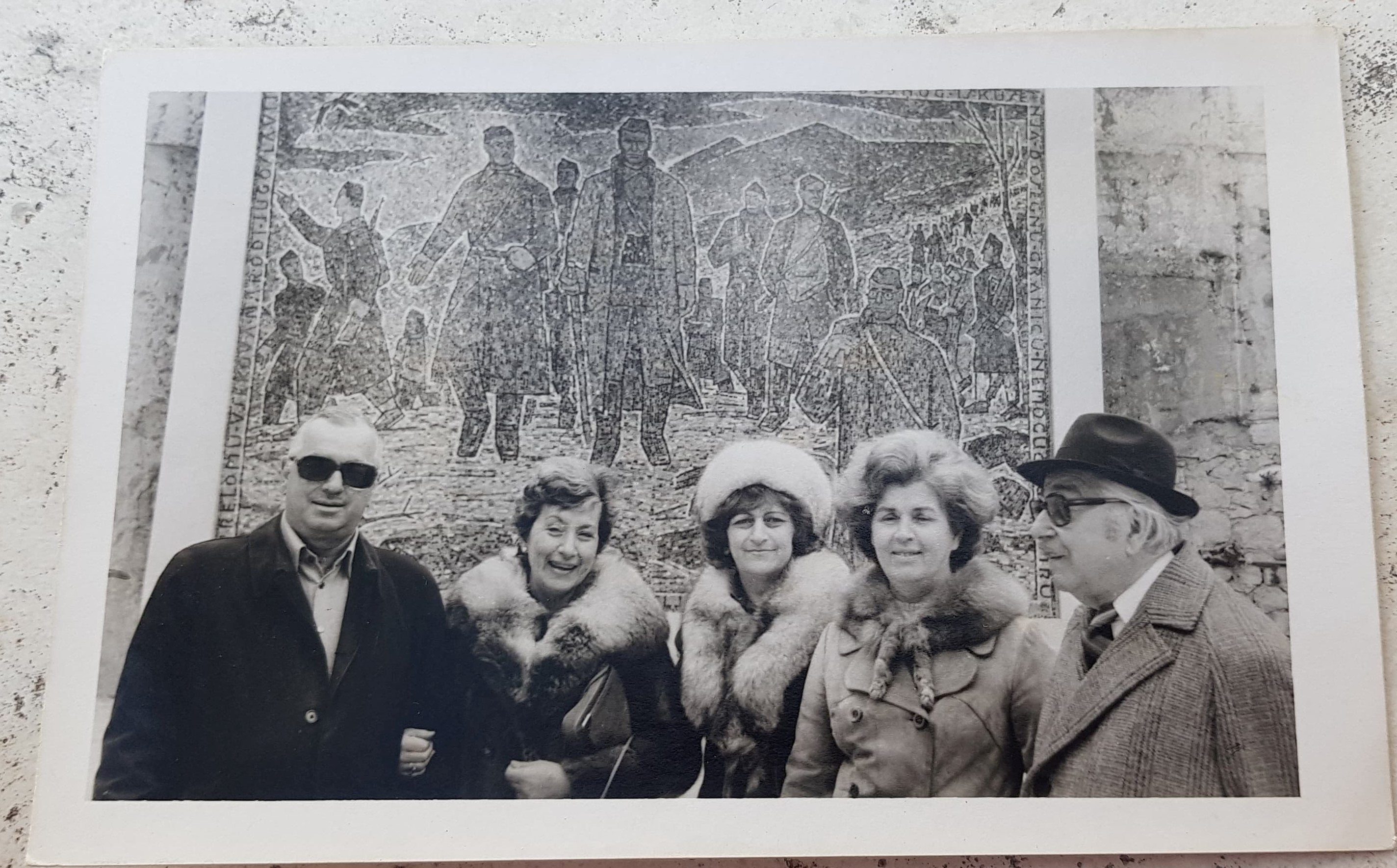
The wife of Ivan Joko Knežević and friends, standing in front of the mosaic in Omiš after the unveiling of this work of Croatia Public Art © Knežević family archives
This is not the only time the work of the rather brilliant Ivan Joko Knežević has undergone such a fate. Croatia's only true master of mosaic operating in the 1950s, 1960s and 1970s, his incredible 'Narod u svojoj težnji k stalnom napretku' mosaic was a proud feature adorning the walls of the former military hospital in Križine, Split until Croatian independence. Thereafter, it sat behind a closed curtain for 15 years until some of the city's more enlightened residents insisted the curtain be removed. Happily, this work of Croatia Public Art is now back on display.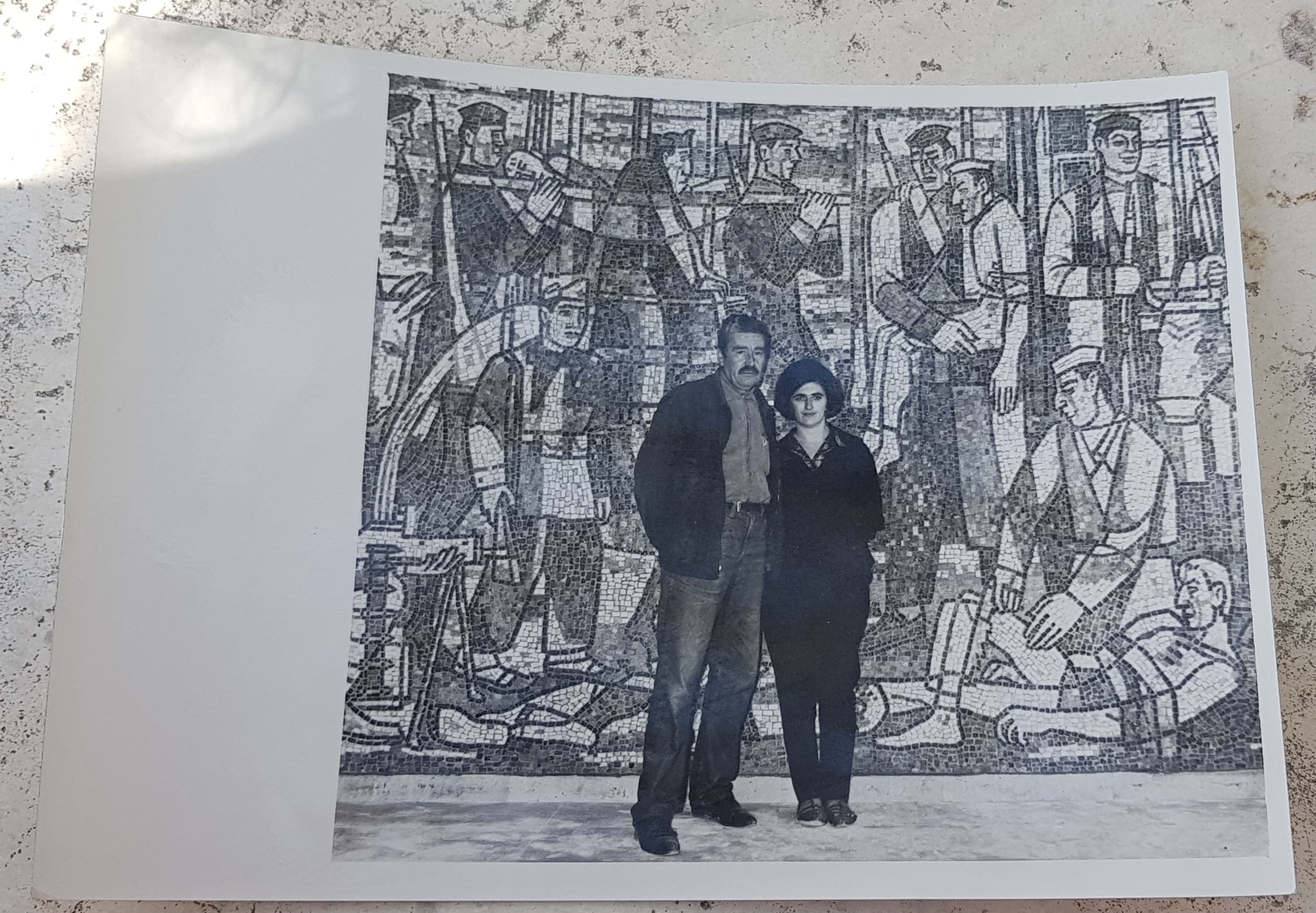
Ivan Joko Knežević standing in front of his Croatia Public Art mosaic at the former military hospital in Split © Knežević family archives
Spomenik narodu-heroju Slavonije (Monument to the hero people of Slavonia) was a former World War II memorial by Vojin Bakić. So gigantic was this stainless steel monolith of gratitude that it took over a decade to build. After completion, it was the largest postmodern sculpture in the world. It took a concerted but incomparable five-day effort by bored soldiers with leftover explosives to destroy it following the end of Croatia's war of independence. Today, such structures of art are recognised and hugely appreciated by many. Fans from all over the world travel to see them. Located in Kamenska, Brestovac, one of the most deprived areas of Slavonia, there is now nothing for the tourists to come and see except the lubenica (watermelon) growing slowly. So, they do not come.
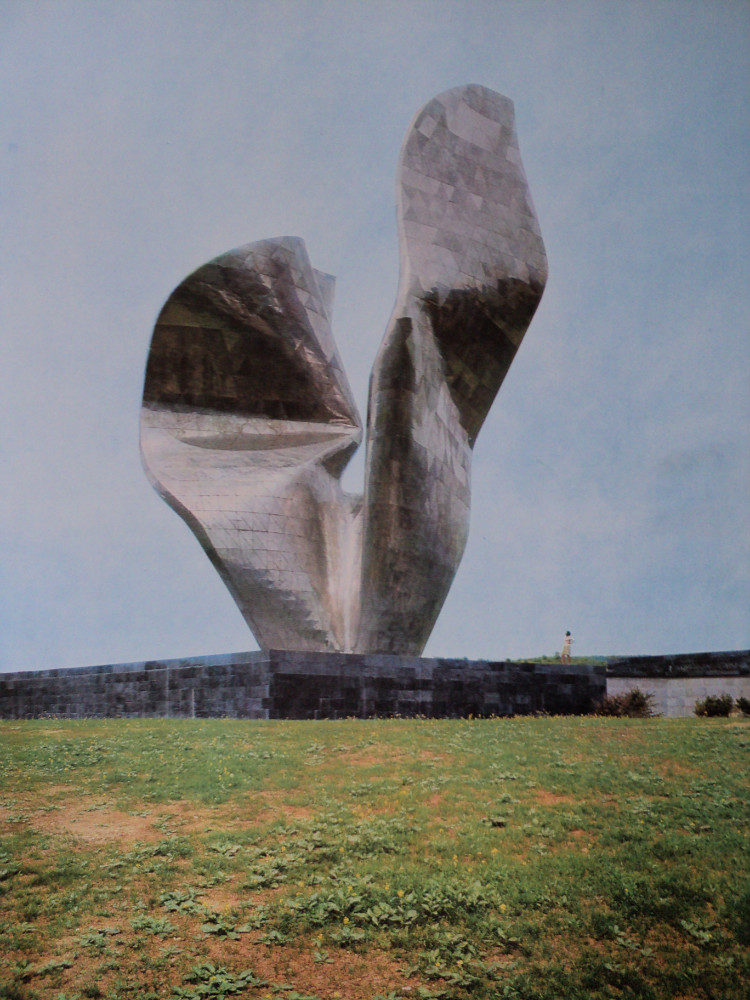
Spomenik narodu-heroju Slavonije (Monument to the hero people of Slavonia) by Vojin Bakić. Built over 10 years, it was the largest postmodern sculpture in the world. It took five days to destroy with explosives © Public domain
Of course, the removal of the latter examples are rooted in a change of regime and political climate. Whether you approve of the recent removal of statues of slave traders in England in response to the Black Lives Matter movement, the famous toppling of Saddam Hussein's statue following the liberation of Baghdad or the destruction of world heritage sites like Palmyra by Isis depends only on your personal perspective and politics. It is all the same thing. The removal of Zagreb's 'Little Prince' just seems like thoughtless vandalism in comparison.
Neighbourhood authorities in Dubrava have promised the return of the much-loved mural, a feat complicated by travel restrictions as its author lives in Novi Sad, Serbia. For now, city residents will look at nothing and curse the shortsightedness of the 'Big Blue Babies' who removed it. But, can they really be so harshly blamed in a country with a history for such wanton destruction of art that is never replaced?
Galleries in Croatia - Butterfly Cycle by Danijel Jaman
Meet the Butterfly Cycle by Danijel Jaman.
There are many galleries in Croatia just waiting to be discovered.
I remember, it happened a few years ago. I walked through the narrow stone streets of my beautiful Dalmatian City of Split when I noticed a lively, spacious place. It immediately attracted my attention.
I had no choice but to go in and ask what all this was about. I was told that this is the art gallery of the well-known artist Danijel Jaman. Since the moment I set foot in the gallery until this day, I remained fascinated by every detail of his work – and now, years later, I finally got to meet him personally.
All TCN readers already had a chance to meet the artist through an interview that you can read by clicking here. Since this interview, Danijel Jaman has realised some new artistic ideas which I find very interesting, so this was the perfect opportunity to find out everything about his latest work: ''Butterflies Cycle''.
The "Butterflies Cycle” represents a true optical sensation. It was inspired by his previous painting called ''I <3 U 2''. This painting was created exclusively for the oldest brewery in Norway - ''AASS''. He visited ''AASS'' once and familiarised himself with the entire beer production process.
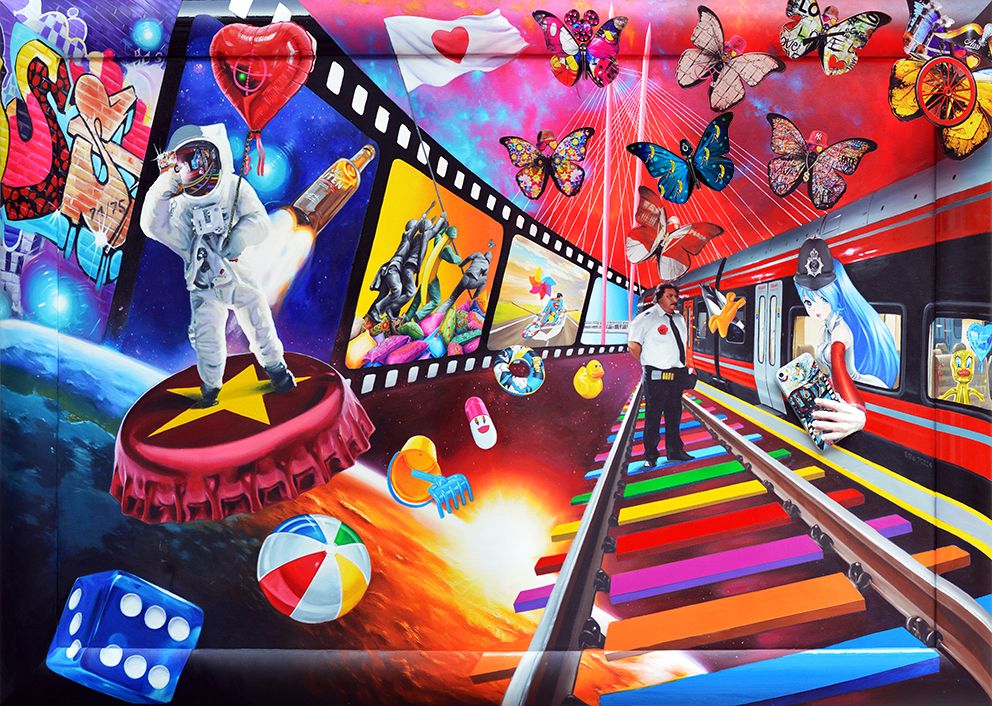
Danijel claims that this painting was very important for his artistic work because it was the inspiration for the creation of several other paintings, including "Charlie" and "Bang Bang". The ''Bang Bang'' piece has butterfly installations with LED lights attached to the back of each butterfly in such a fashion that they reflect upon the painted surface emphasising the colours. ''Bang Bang'' and ''I<3 U 2'' were the inspiration for the ''Butterflies Cycle''.

The artist claims that butterflies are powerful symbols for transmitting messages and ideas so to convey these messages he has created 13 different butterfly sculptures, each of them incredible and colourful. Most of the butterflies are portrayed with a microphone between the wings – so that you can hear the artist’s messages loud and clear. Also, every butterfly sculpture has a cap, hat or other headgear as a symbol of pop art and popular culture.
All the sculptures are made of Plexiglas and they include the stand with the artist’s signature. There are few phases in the production of these unique sculptures: first, the artist makes the design and drawings after which the companies from Split and Zagreb realise his ideas.
1) Love Butterfly - Danijel Jaman
This playful butterfly sculpture represents the contrast between love and anger, peace and war. Peace and love are represented through love inscriptions and symbols on the butterfly’s wings while the smoking gun in the middle stands as a representation of anger and war. The contrast between these emotions deepens even further once you notice that the soldier, otherwise tough character, has heart-shaped glasses as a symbol of love. This butterfly also has on the popular NYC cap which again represents popular culture.
2) No. 5 Butterfly by Danijela Jaman
This sculpture is inspired by the famous Van Gogh’s piece called “Starry Night” but it represents a pop-art take on this imagery. Instead of the stars, there are turquoise dots and yellow bananas instead of the moon. A banana is the artist’s signature and it’s present on almost every painting as a symbol of humor, irony, and sarcasm.
3) ECG Butterfly by Danijela Jaman
The butterfly has a colourful cap with a heart motif, heart-shaped glasses and a face mask (like the ones doctors use) with the heart-love motif. On its wings, you can notice the ECG graph – the rhythm of the heart. The symbolism here is deeply rooted in the idea that everything revolves around love (the heart) - physically and emotionally. The artist also wanted to show something as serious as an ECG in a playful way. This butterfly sculpture was designed in pink and blue colour.
4) Hibiscus Butterfly by Danijel Jaman
This butterfly is inspired by the important painting called "BubbleGum Girl" which we’ve mentioned earlier. The hibiscus flower appears as an important part of the painting and here, within the butterfly sculpture, it has an even greater significance. The hibiscus motif is intertwined here with several symbols of pop culture: the banana again as a symbol of humour, irony, and sarcasm; the British military cap as another powerful and remarkable symbol of pop art and culture; deep turquoise manga eyes which represent the reflection of our souls.
5) Banana Butterfly by Danijel Jaman
This sculpture is specifically devoted to bananas – the artist’s famous signature and a symbol of humour. He presents two bananas from two paintings: one from the famous "NY" painting where the banana is dressed as a sheriff and another one from the "Revolution" painting – where it is holding a love banner. The paintings, as well as a butterfly sculpture, are representations of a modern lifestyle – of which the business and consumerism are a large part. By placing bananas in this context, the artist wanted to show the sarcastic and ridiculous side of modern lifestyle.
6) Bubblegum Girl Butterfly by Danijel Jaman
Bubblegum Girl Butterfly is inspired by the painting "Bubblegum Girl". Both the sculpture and the painting show a strong contrast between the good and the bad. Good is represented by a sweet girl with blonde hair who blows soap bubbles from a toy while bad is shown in a character of a girl with messy, colourful hair who is blowing bubblegum bubbles.
7) Graffiti Butterfly by Danijel Jaman
Graffiti Butterfly is inspired by his famous painting “Graffiti”. The interesting image portrayed here is that of a British police officer who is carrying a gift behind his back while at the same time kicking a teddy bear with his foot. The metaphor hiding here is that things are not always what they appear at first sight and yet again the artist is stressing the contrast between good and bad in life. Graffiti sculpture also represents a contrast between graffiti artists as representatives of urban art and stencil artist as a different stream of graffiti art. There is an inscription on this sculpture ''be inspired'' which is also part of Danijel Jaman brand logo.
8) Pope Butterfly by Danijel Jaman
This sculpture shows a strong contrast between war and peace with elements of humor, sarcasm, and irony. Peace is represented by the character of the pope, but instead of the papal cap, there is a NY police officer's cap - a humouristic symbol of popular culture. On the left side of the butterfly wing, there is a recognisable bar code tag – reminding us of the fact that it is so easy to find a reason for war today, as easy as scanning products in the store. On the right wing of the butterfly, as a contrast to the ''war'' inscription on the left side, there is the ''peace'' inscription.
9) Rap Butterfly by Danijel Jaman
The Rap Butterfly appears tough at first sight – with his gang-style necklace and a hat (which are symbols of pop art and culture), but there is something very soft and touching about him as well. The graffiti on his wings are actual love messages people leave on the wall of Romeo and Juliette’s house in Verona. The insight into his soul reveals a romanticist represented by this eternal Shakespeare's piece. Simply put, in this butterfly we see a tough, gangster-style guy with romantic soul.
10) Thor Butterfly
The butterfly is the representation of the Norwegian god Thor shown in a humoristic way. Thor is the mythological god of storm and light and has always been presented as a great and powerful man. But the artist has created the character in a more humorous manner as a way of saying to every one of us that we should be more like children - enjoy life and stay forever playful instead of being constantly immersed in the rush and business of modern life.
11) Napoleon Butterfly
The sculpture is inspired by one character that is often featuring in Jaman’s paintings – the Admiral. He is an important part of several paintings – two of the distinctive ones being Candy Queen and Il Mondo. In both paintings the Admiral is portrayed in his underwear on top of the globe to remind us to be modest in life, otherwise, our ambition could be the end of us.
12) Mickey Butterfly
Mickey is another powerful and remarkable symbol of popular art and culture. The artist has created the figure of popular Mickey in a completely different way - in his own style: the original was deconstructed to make parts for the unique collage the artist had in mind. The result is an extraordinary visual balance of this vibrant and eye-catching sculpture.
13) Smile Butterfly
The Smiley Butterfly is yet another piece in which the artist is dealing with the sharp contrast between love and war. The butterfly has a soldier’s helmet which instantly evokes thoughts of war and hatred. Nevertheless, the butterfly also conveys the message of love with hearts and smileys on its wings – so the idea of optimism is something that the artist wants to imprint onto the mind of everyone who is observing his art.
Danijel Jaman's work is full of symbolism and humour conveyed through his truly unique style - the main feature of which is the use of very vivid colours. The artist states that colours for him have deep meaning so he uses them to provoke all sorts of different feelings in the observer. With advancement in modern science, especially in colour theory, we have plenty of scientific evidence to support this claim.

Colours affect us, and they cause a very special reaction within us.
Another thing that intrigued me was the "Paradise" subway sign at the very entrance to the Jaman Art Center. The Paradise sign is there so that people could connect with the artwork inside with the Candy Queen painting which features the sign.

The art here is very much alive. It is three-dimensional (with a lot of real-life elements popping out from the canvas) and it has the tendency to go beyond the frames and into the space of the gallery in a form of 3D objects or sculptures.
Keep up with our lifestyle section if you're interested in getting to know what's going on up and down the country, from art to culture, to history and heritage.
From the Meneghello Collection - Art Exhibition in Hvar until 7th September
A chance to see selected art from the Dagmar Meneghello Collection without taking a boat to Palmižana - although that is in itself a great trip. Visit Hvar before September 7th, 2018 and enjoy this free exhibition of contemporary Croatian art.










